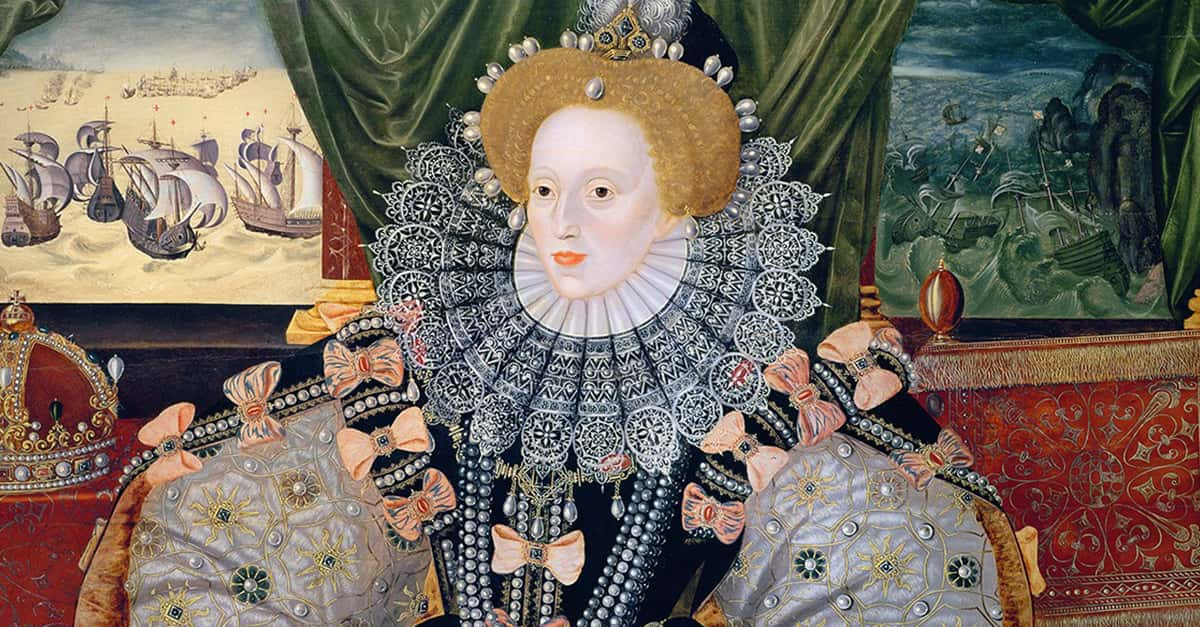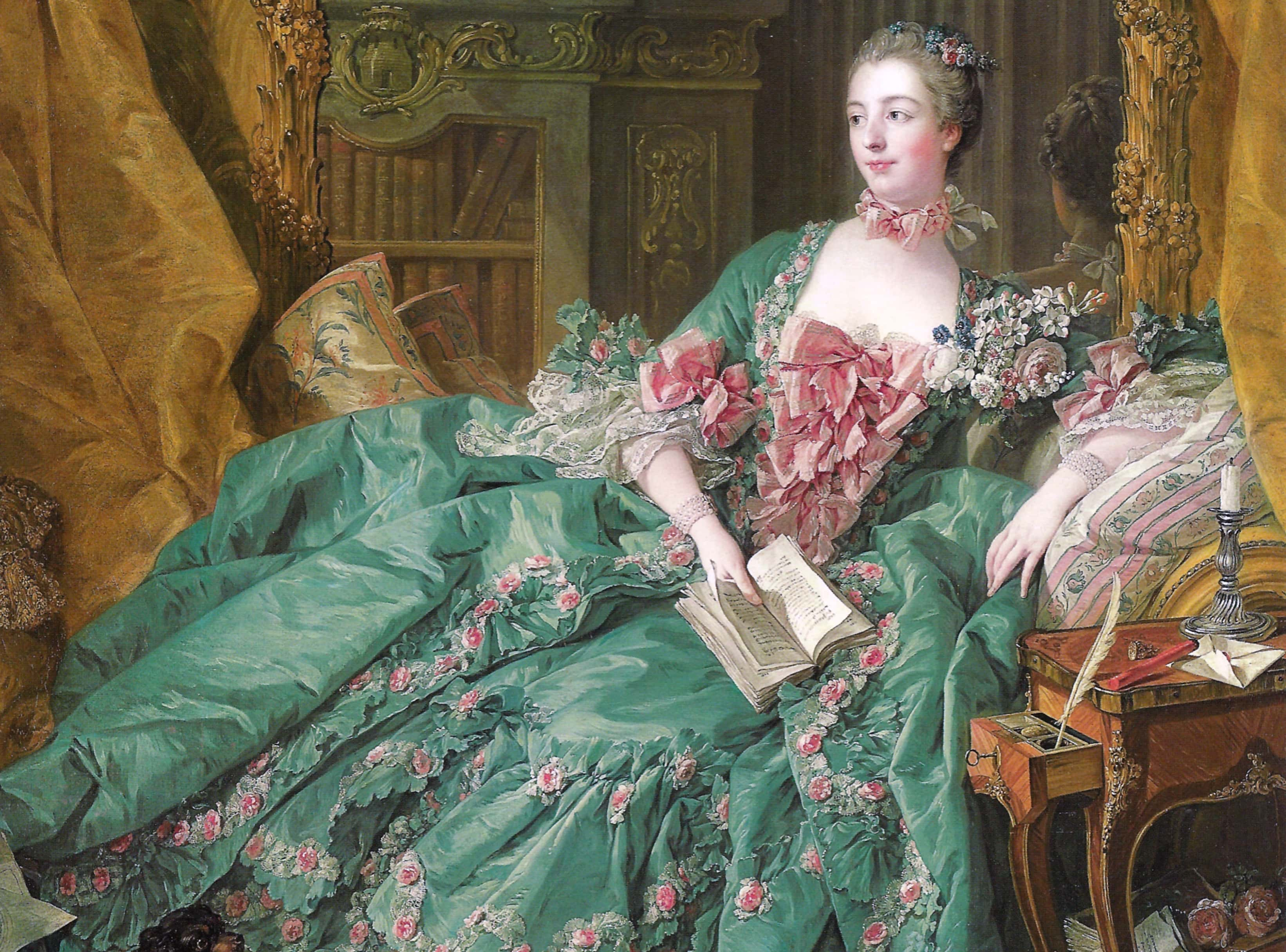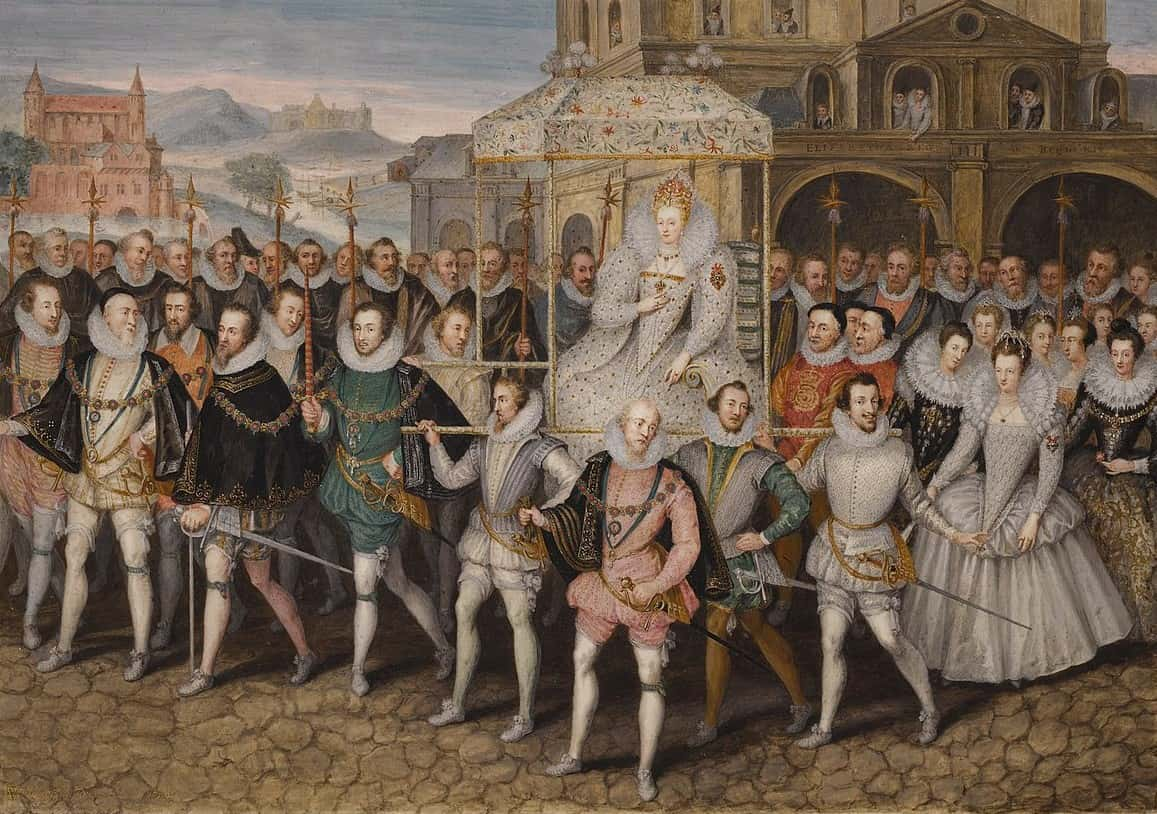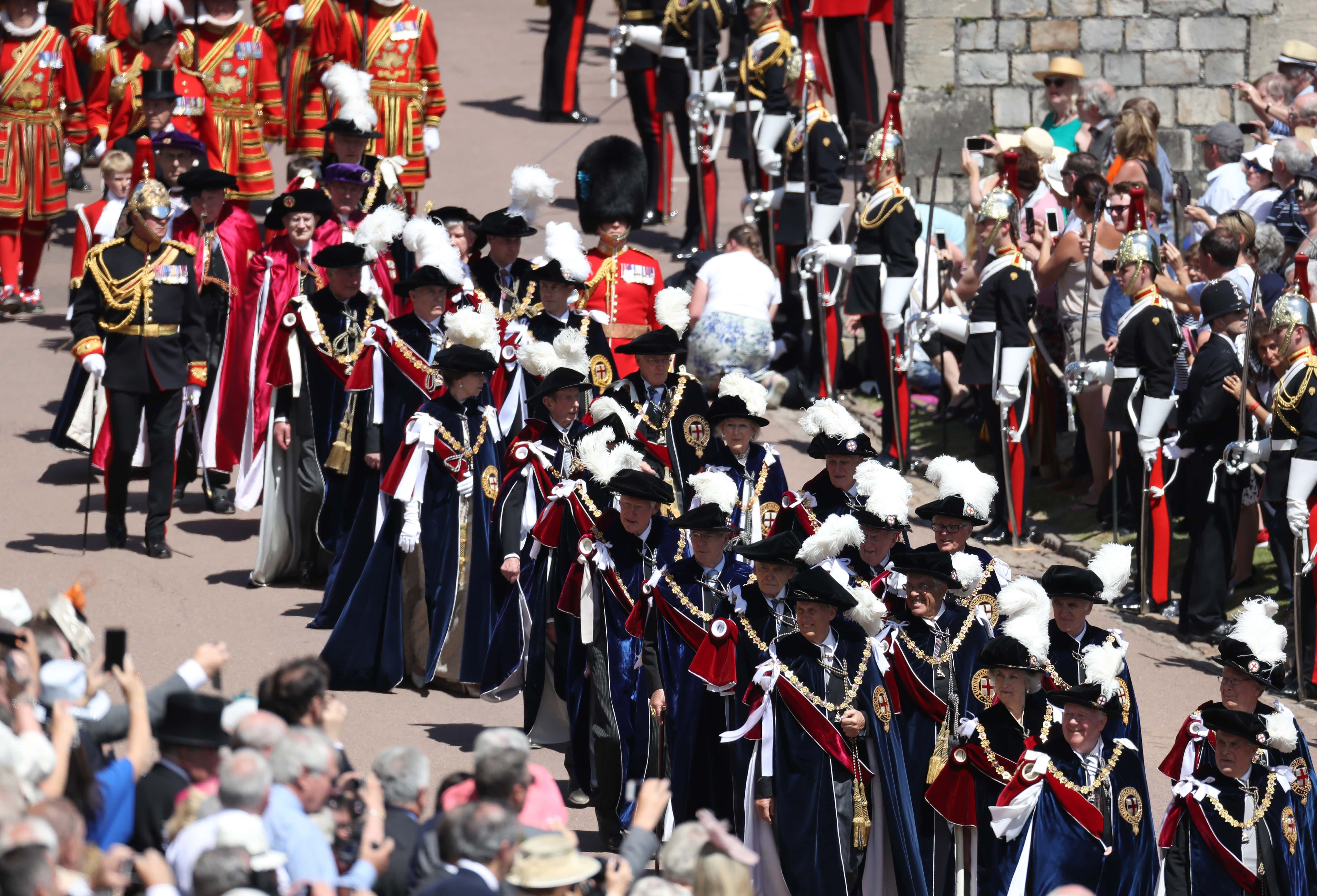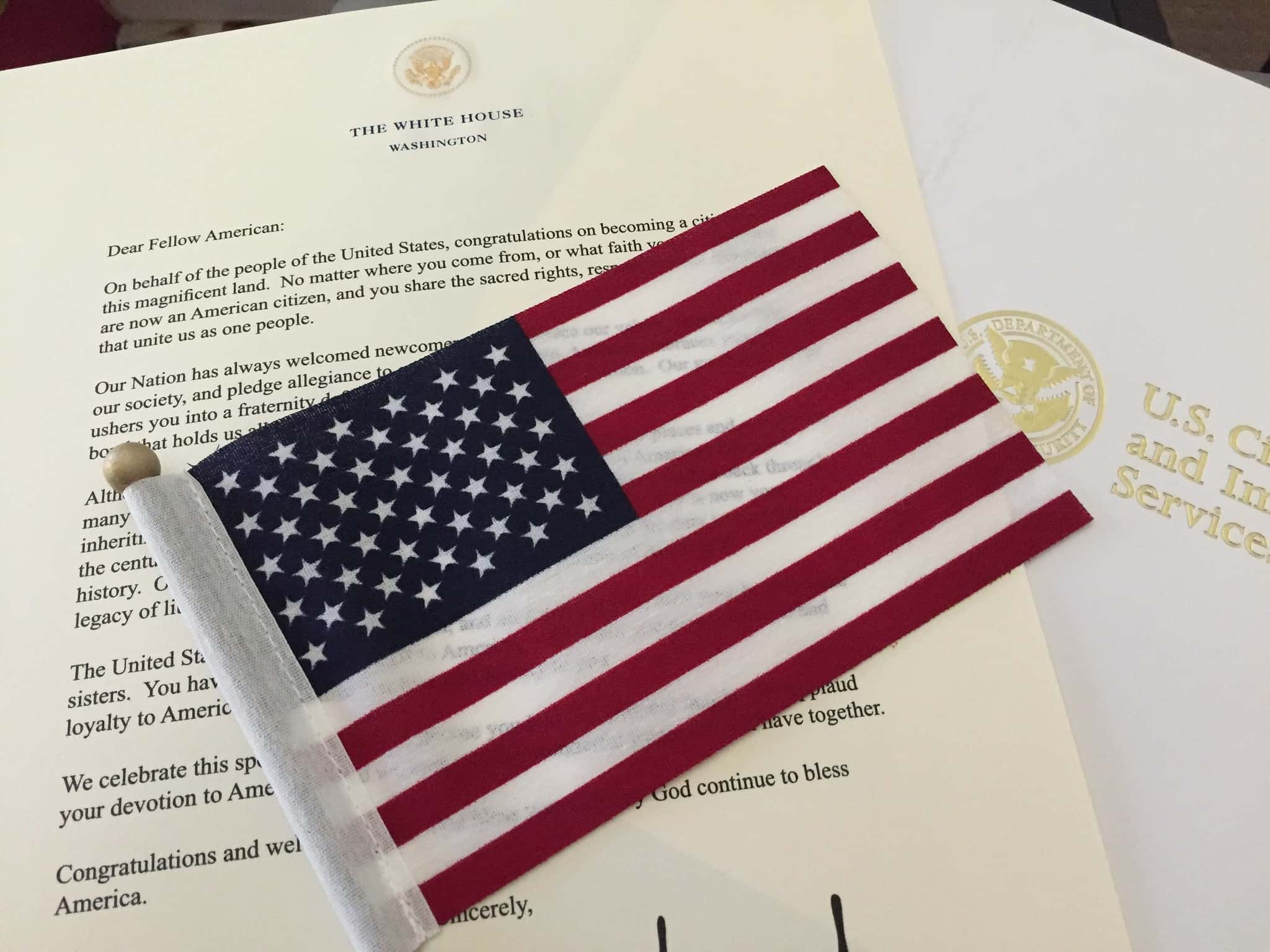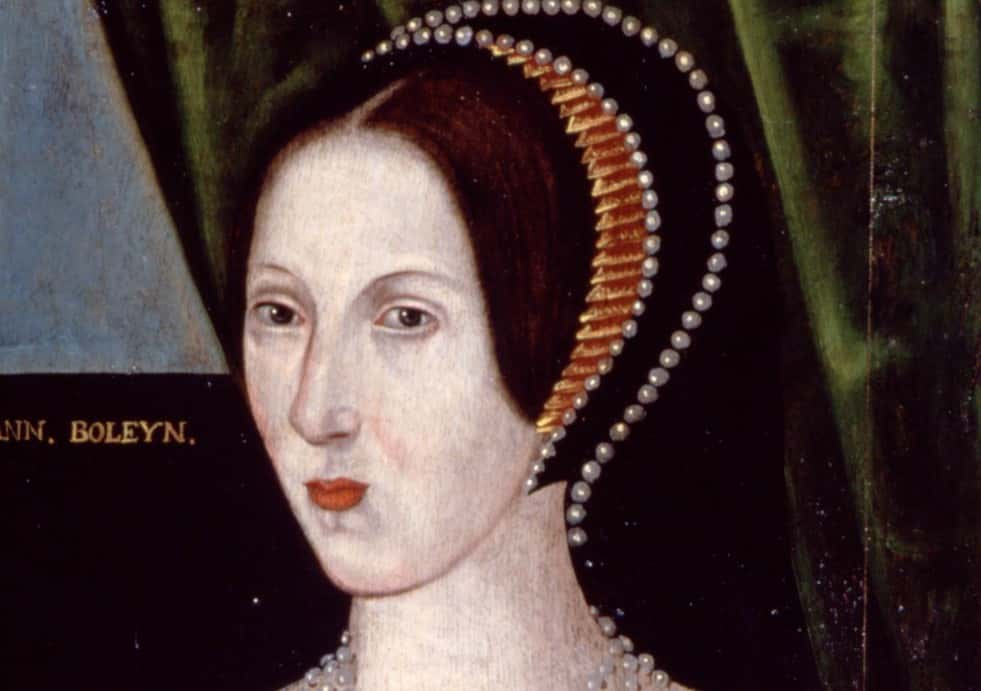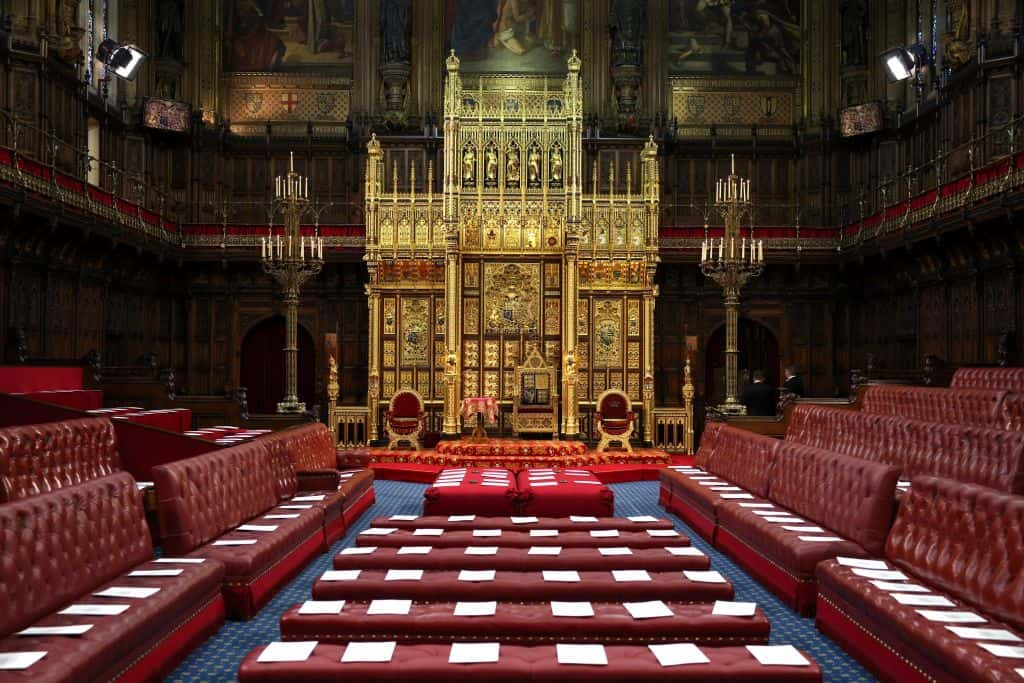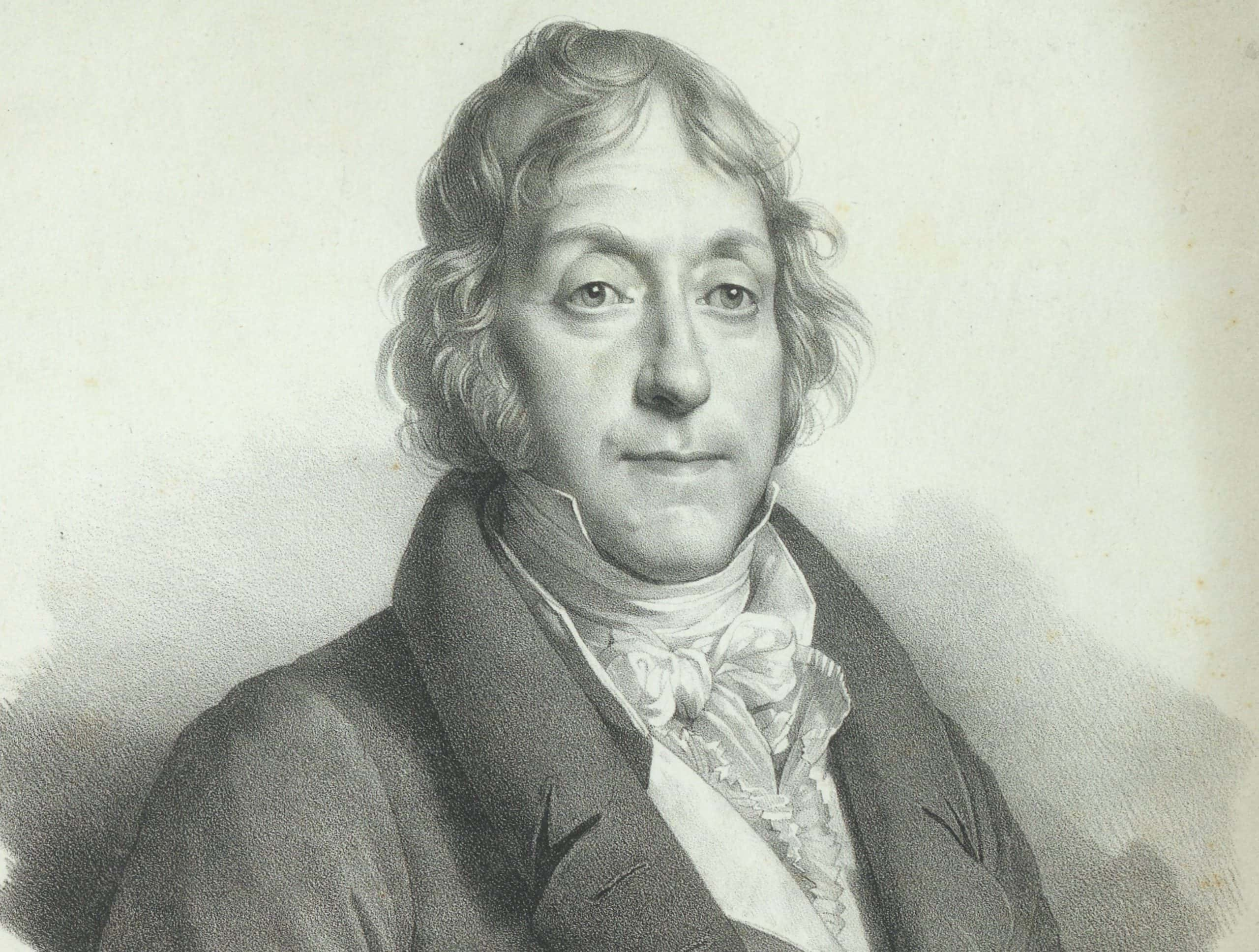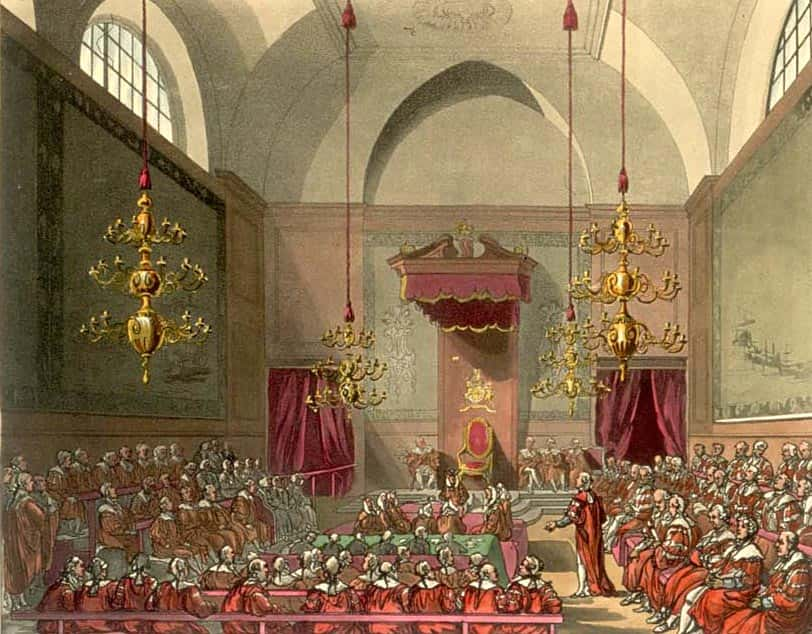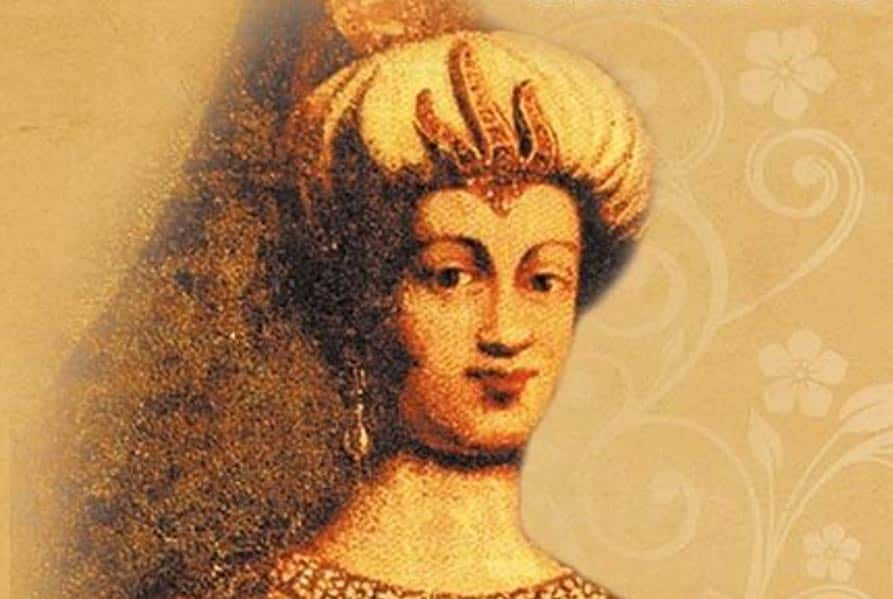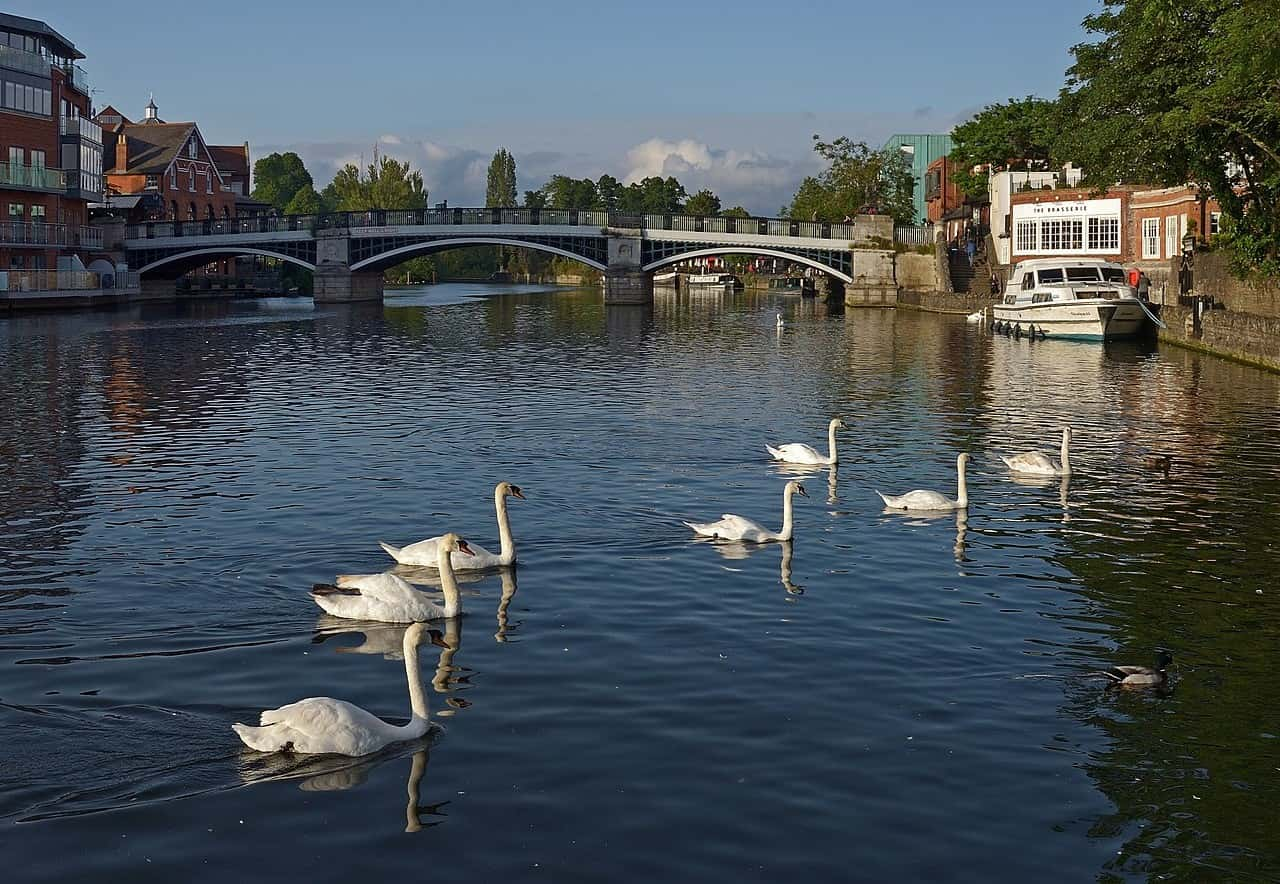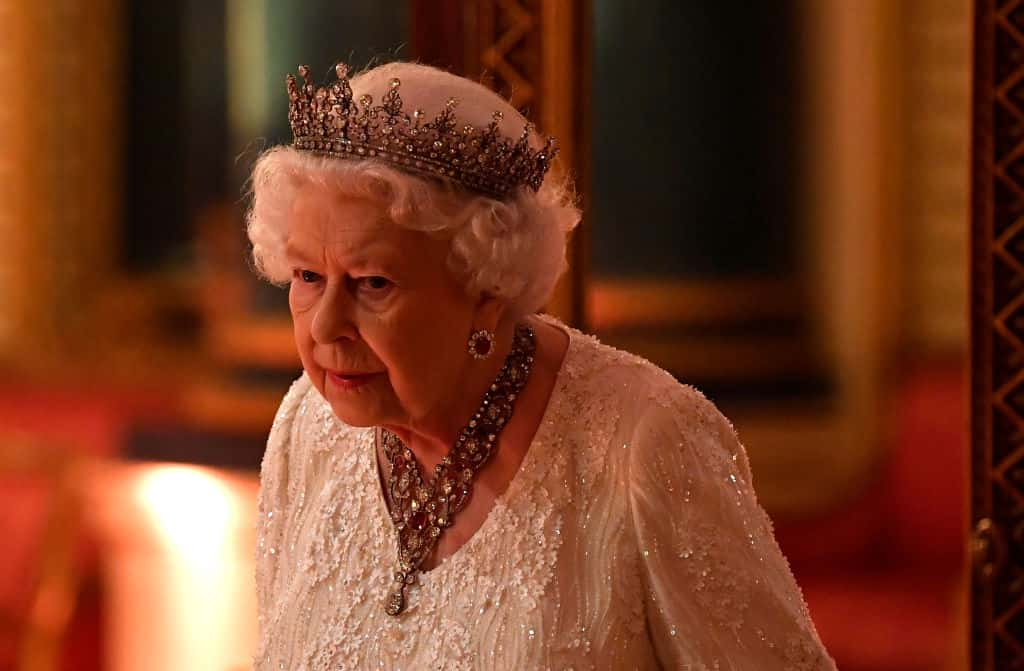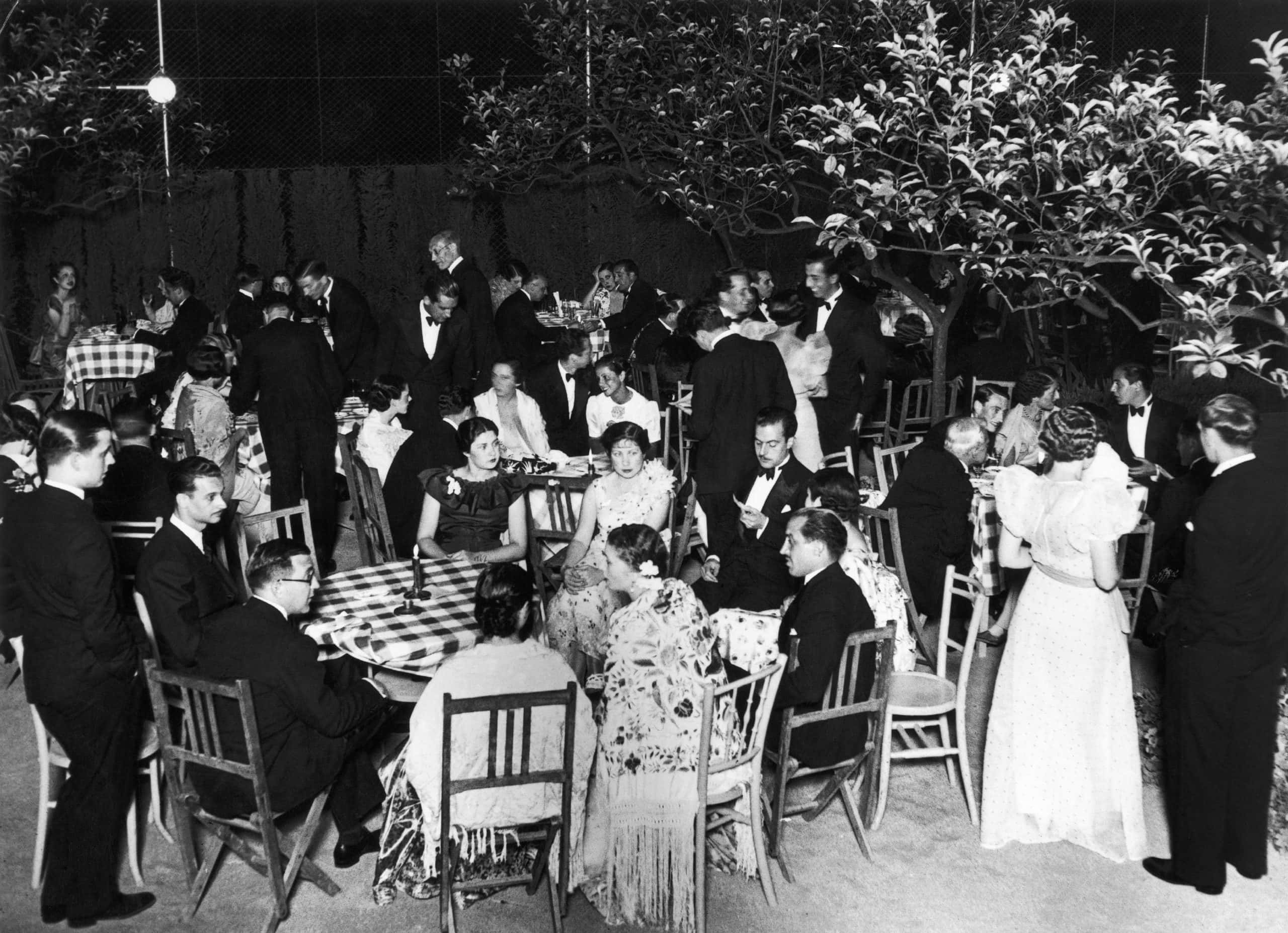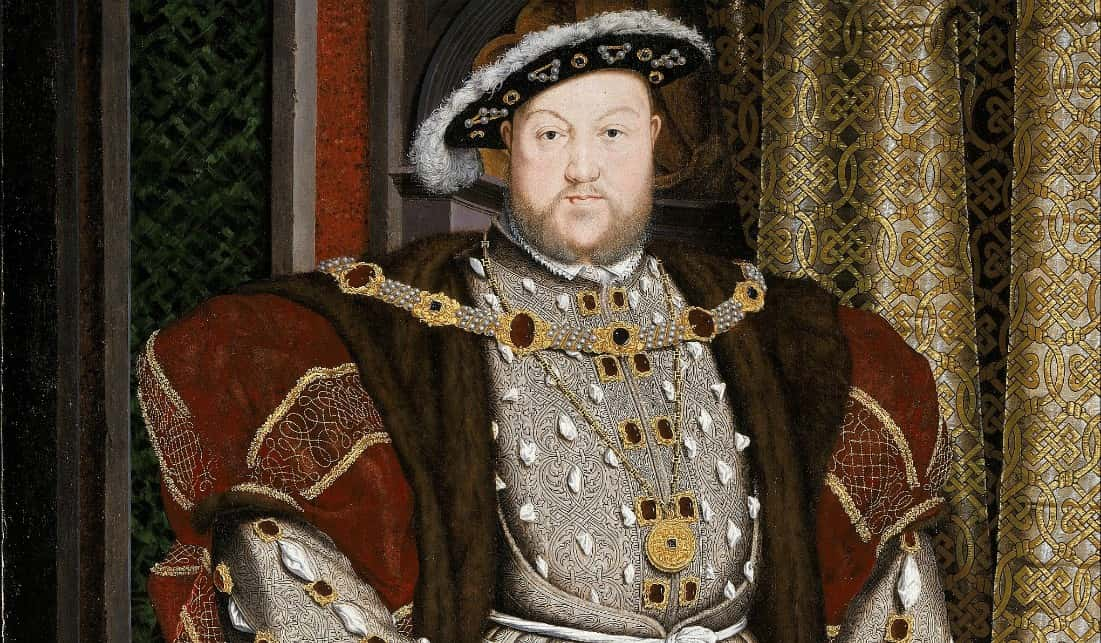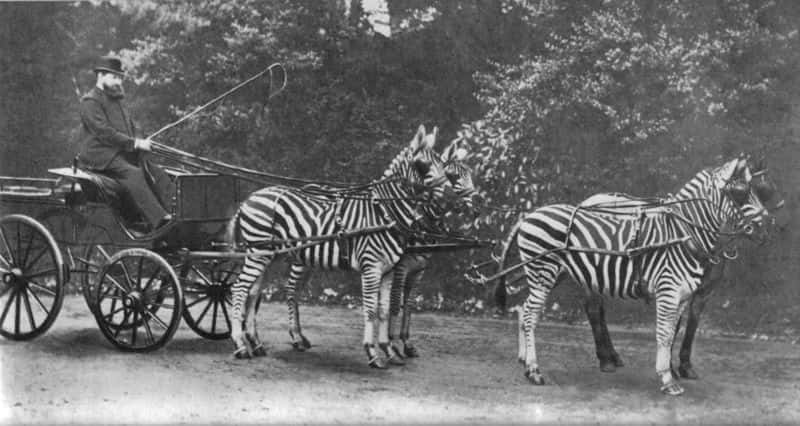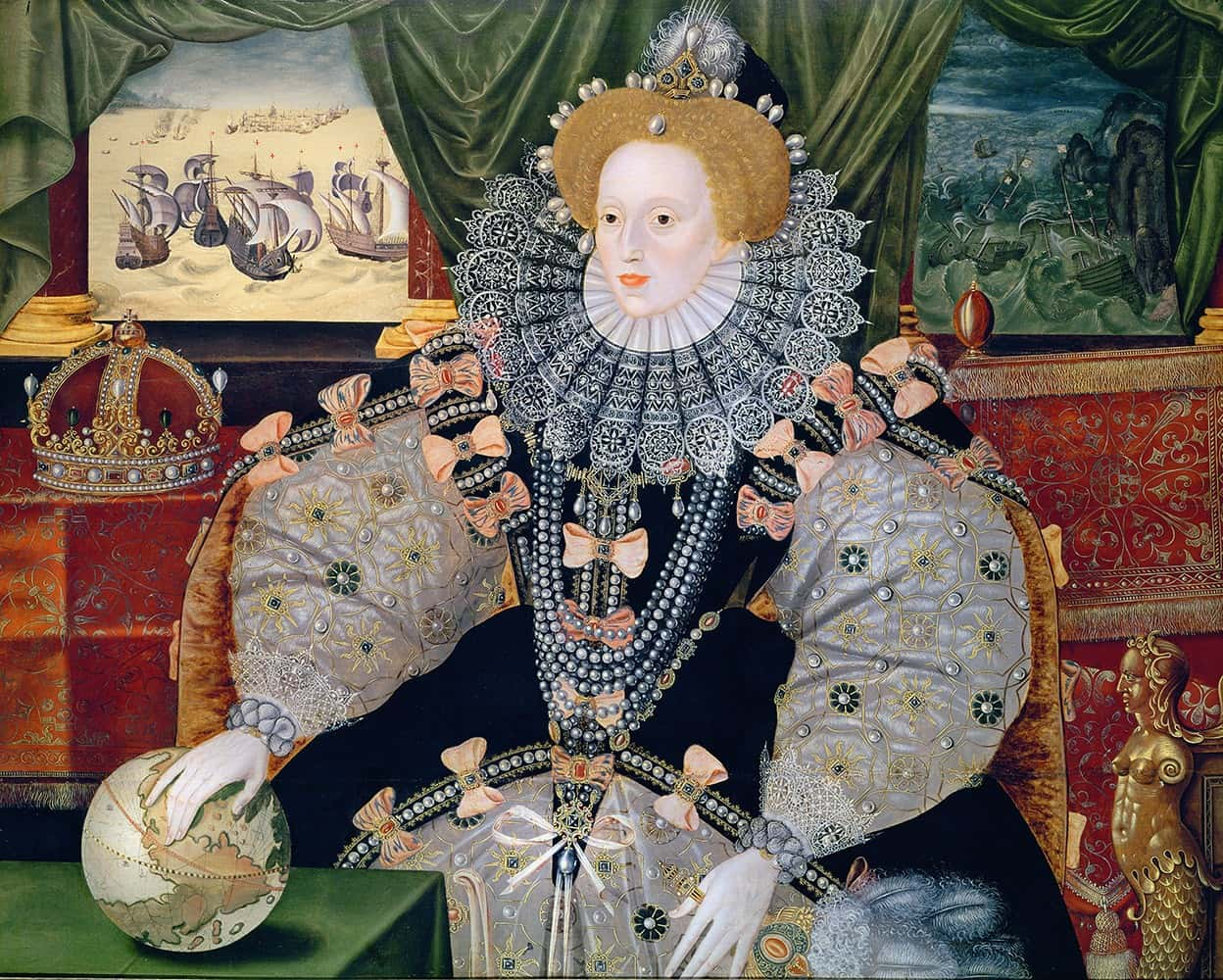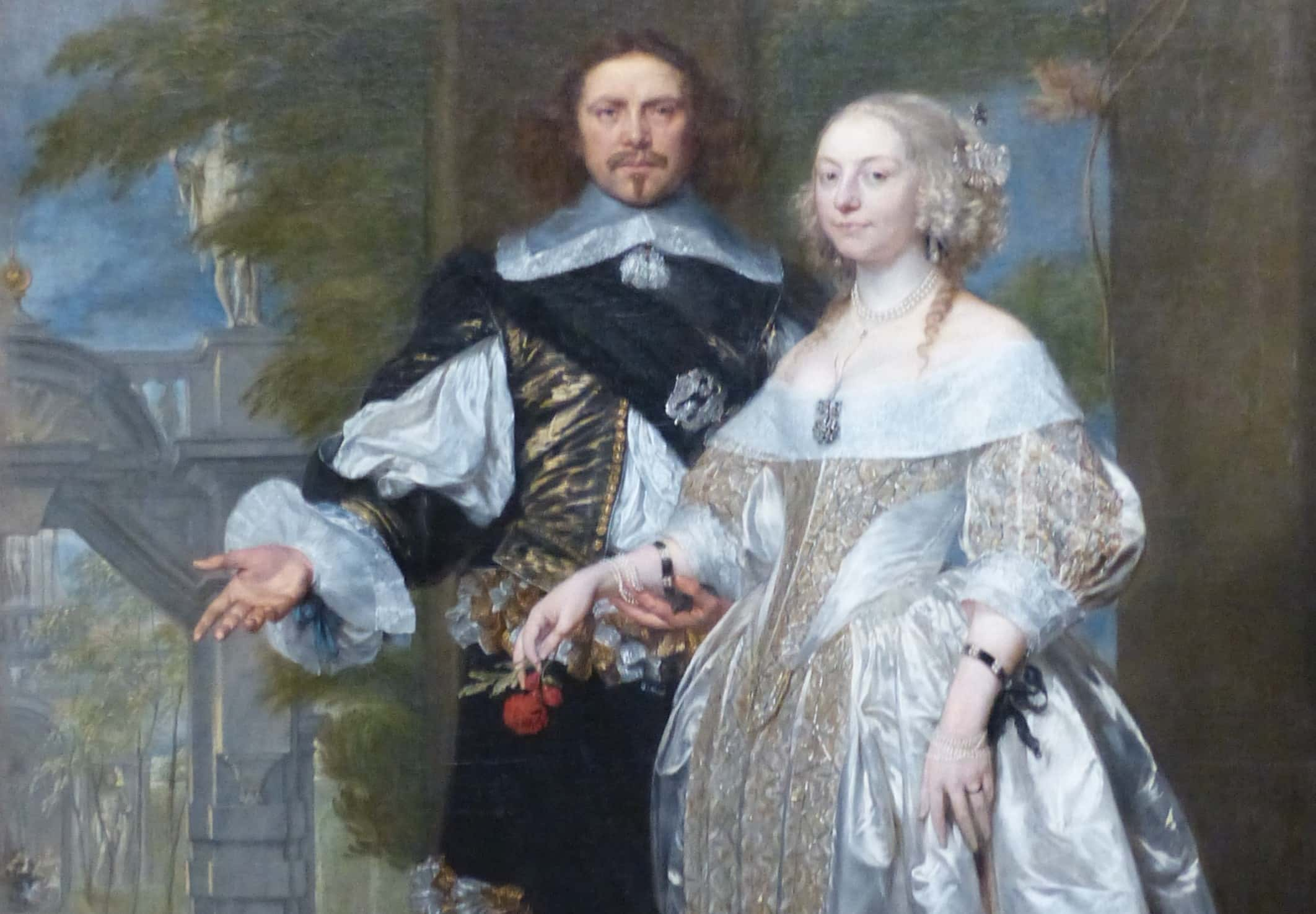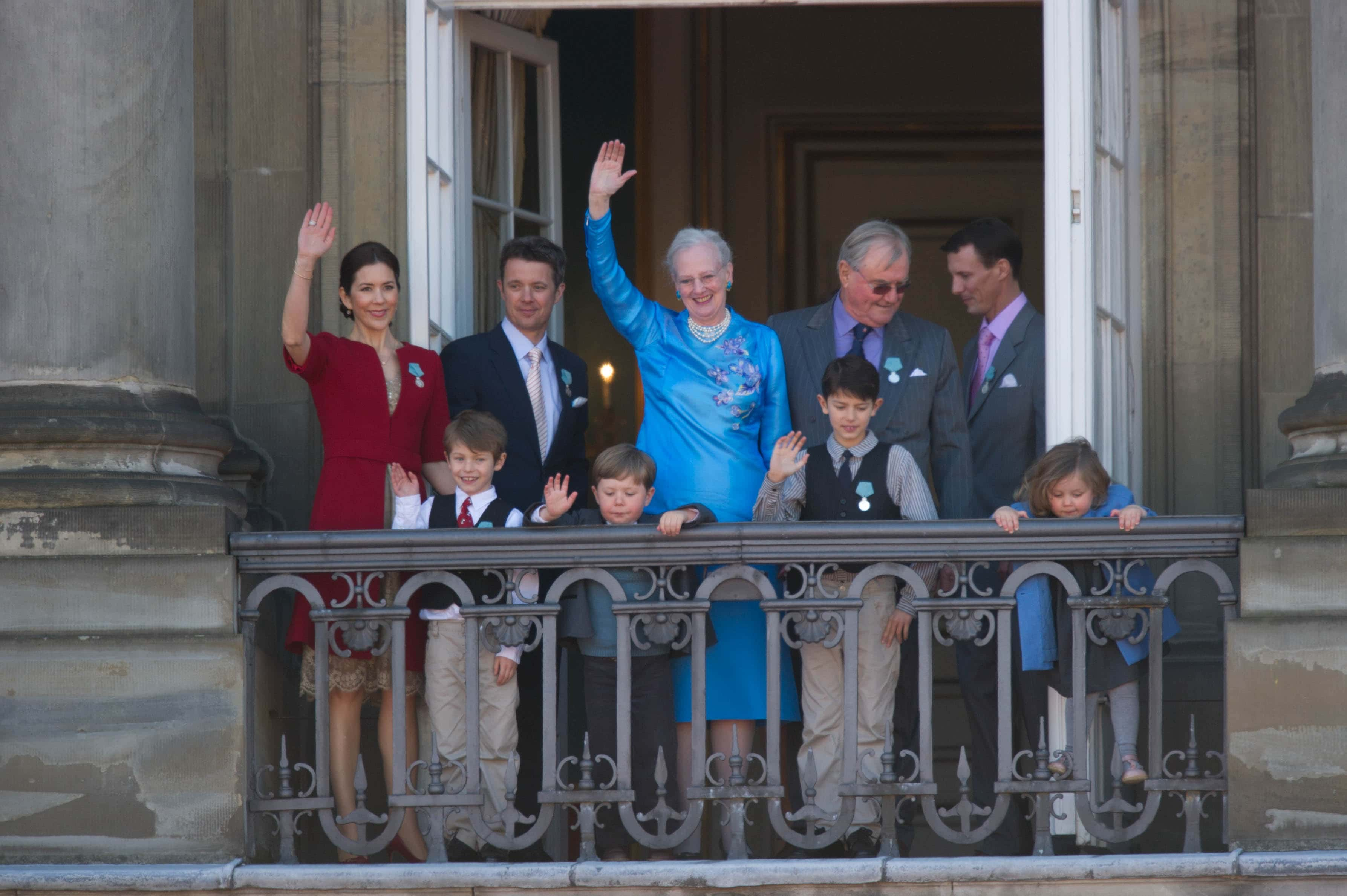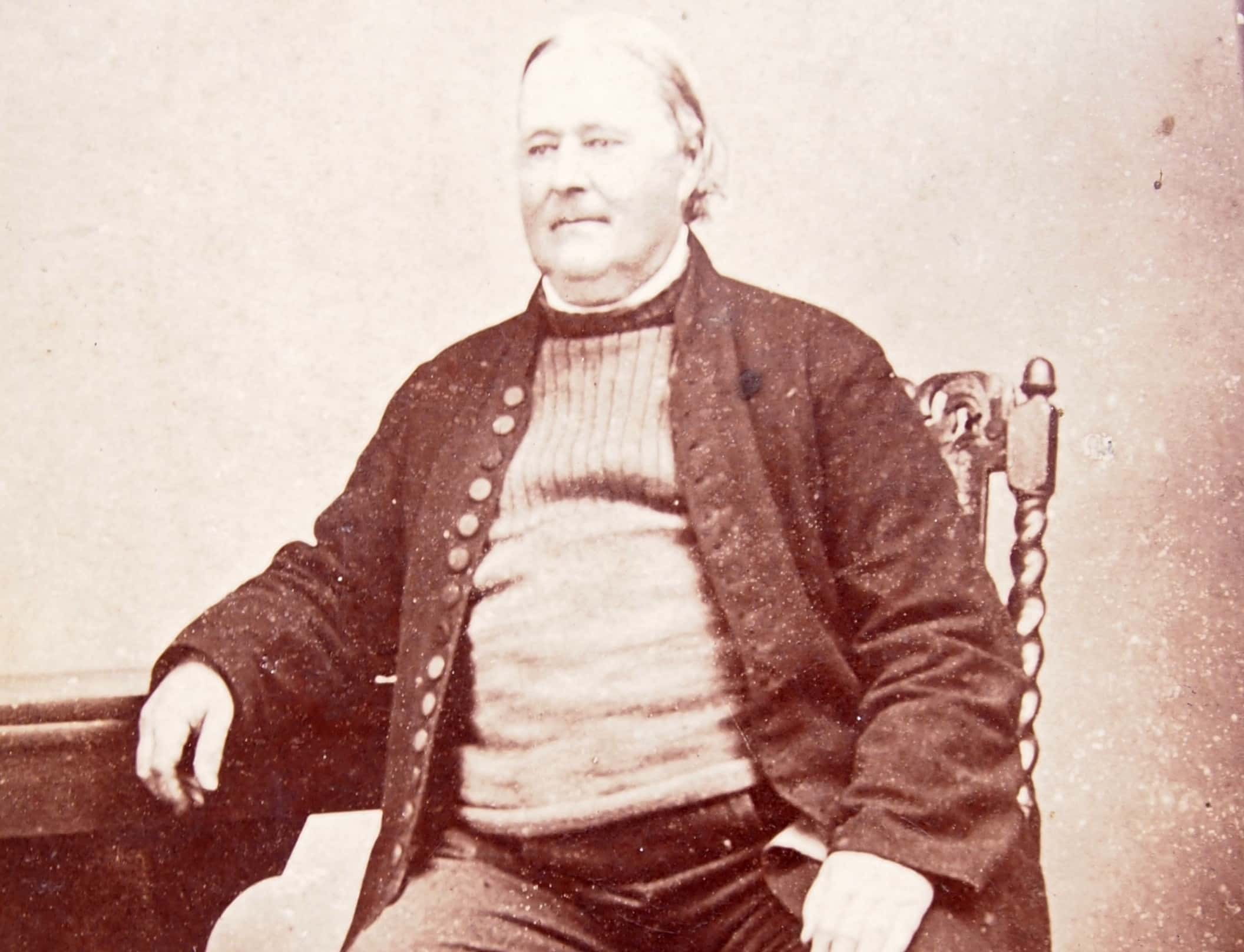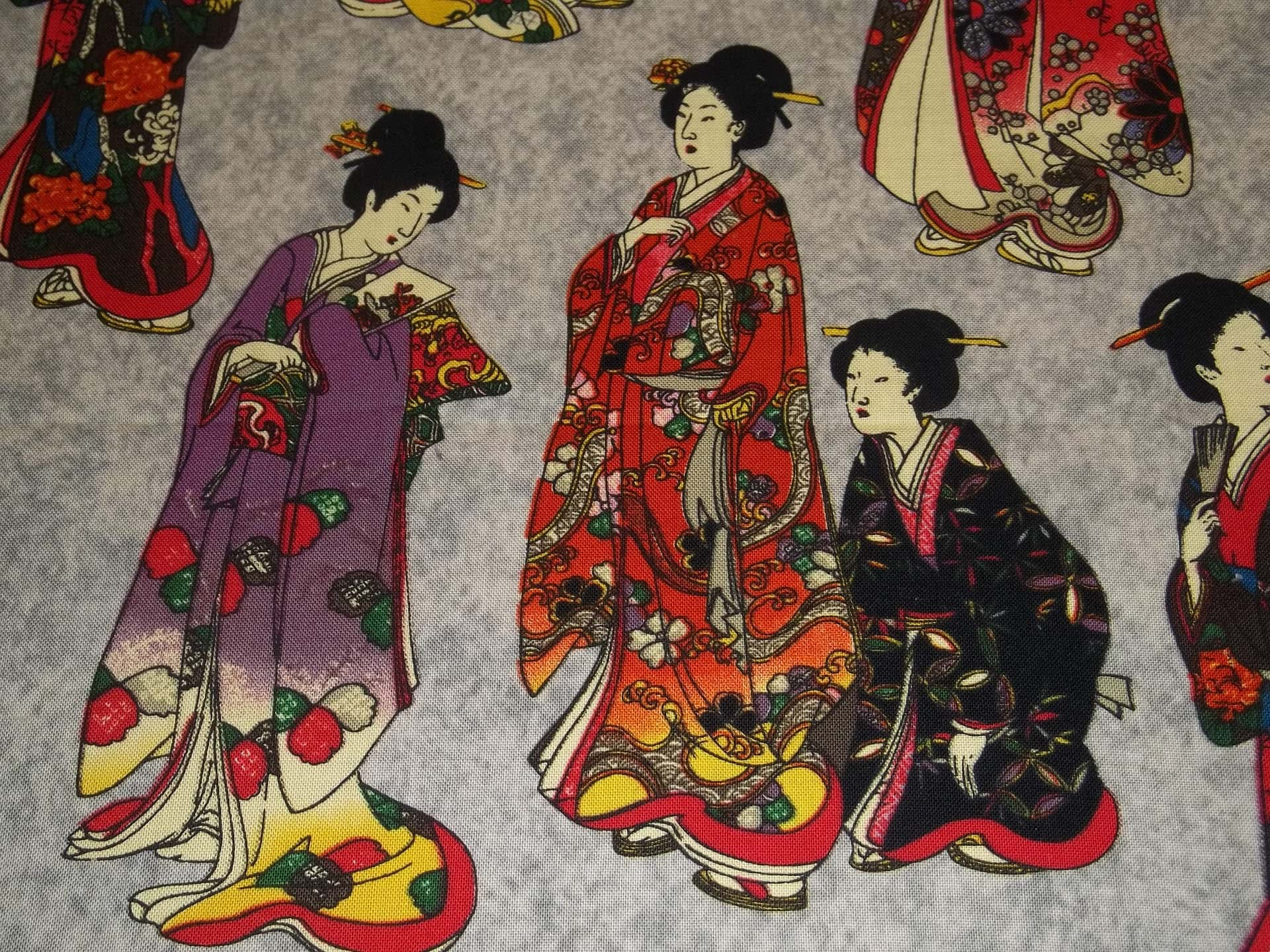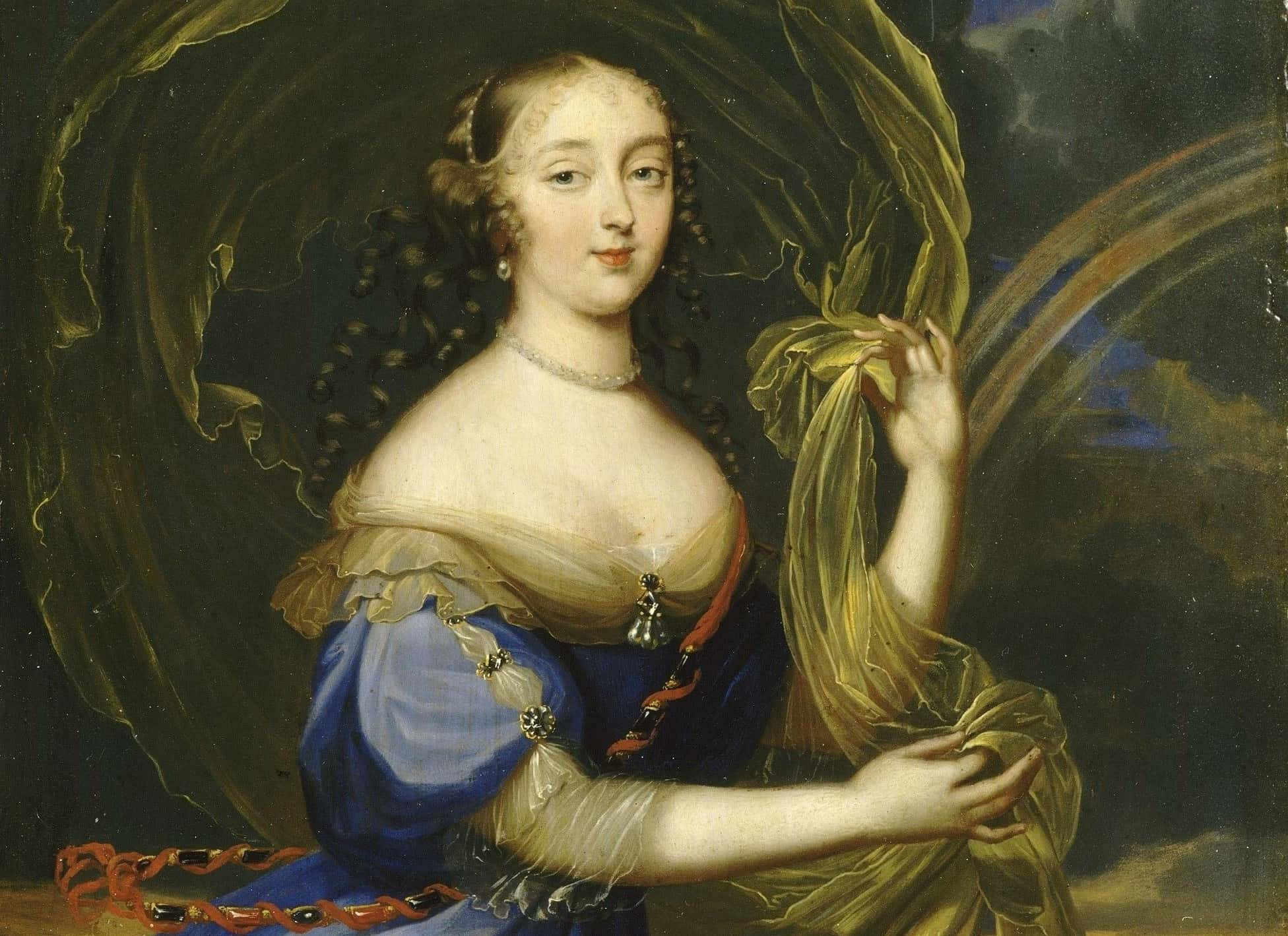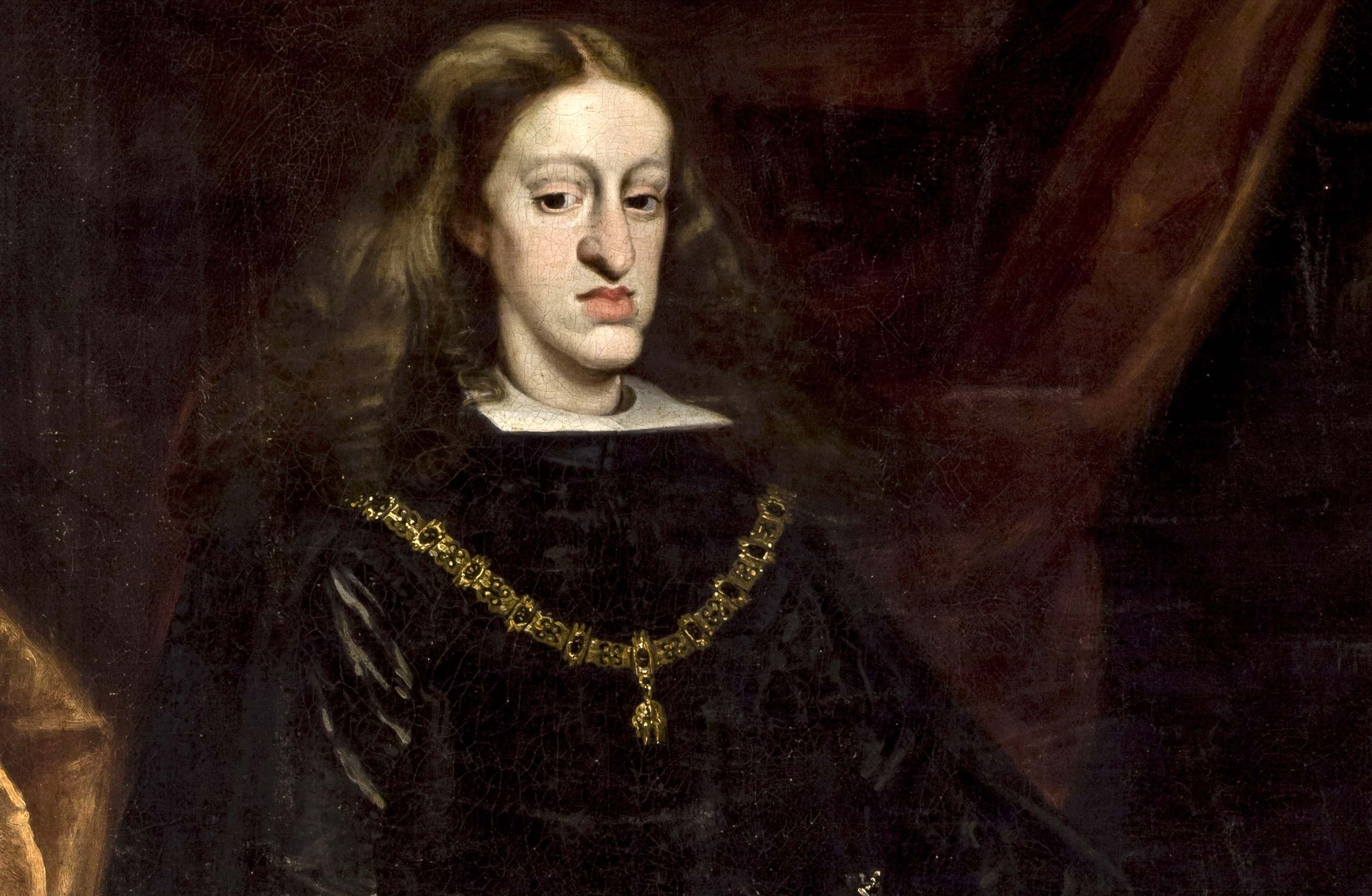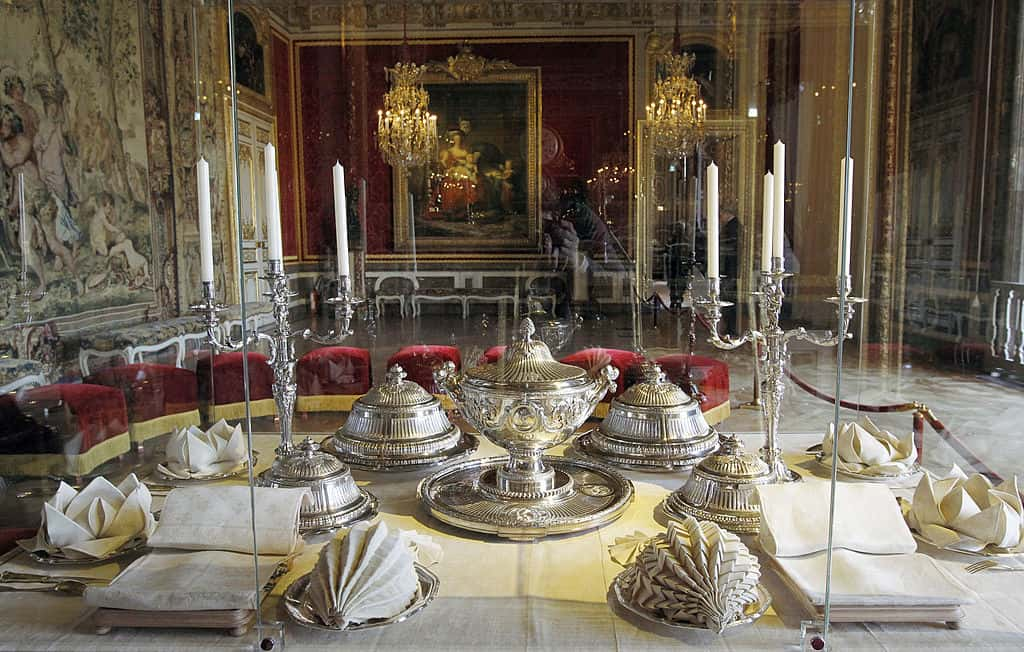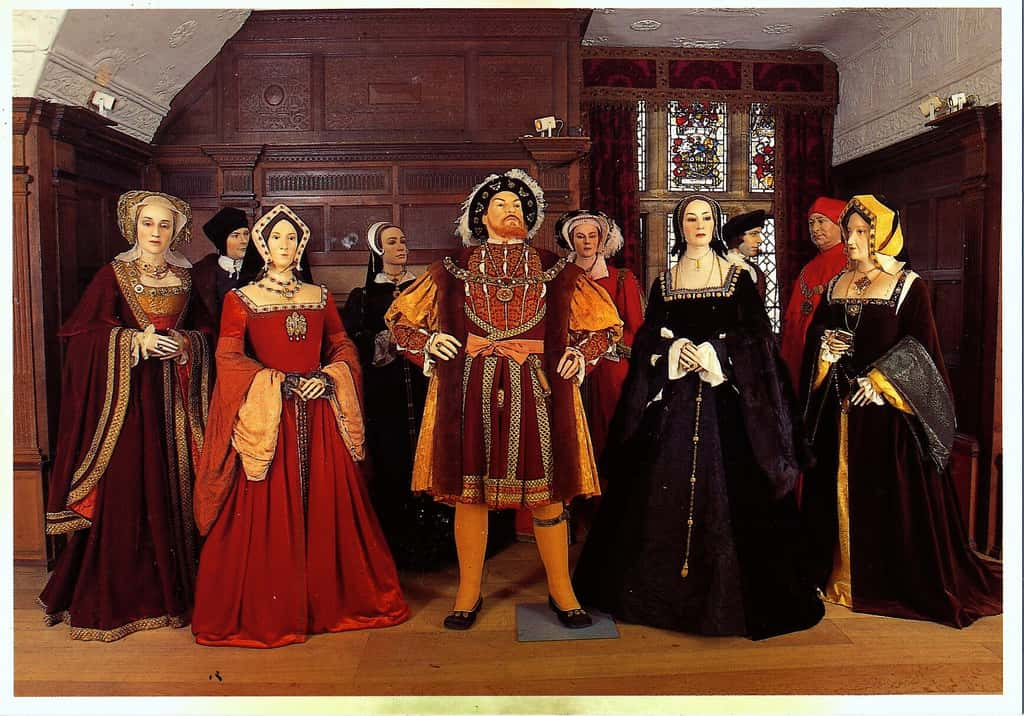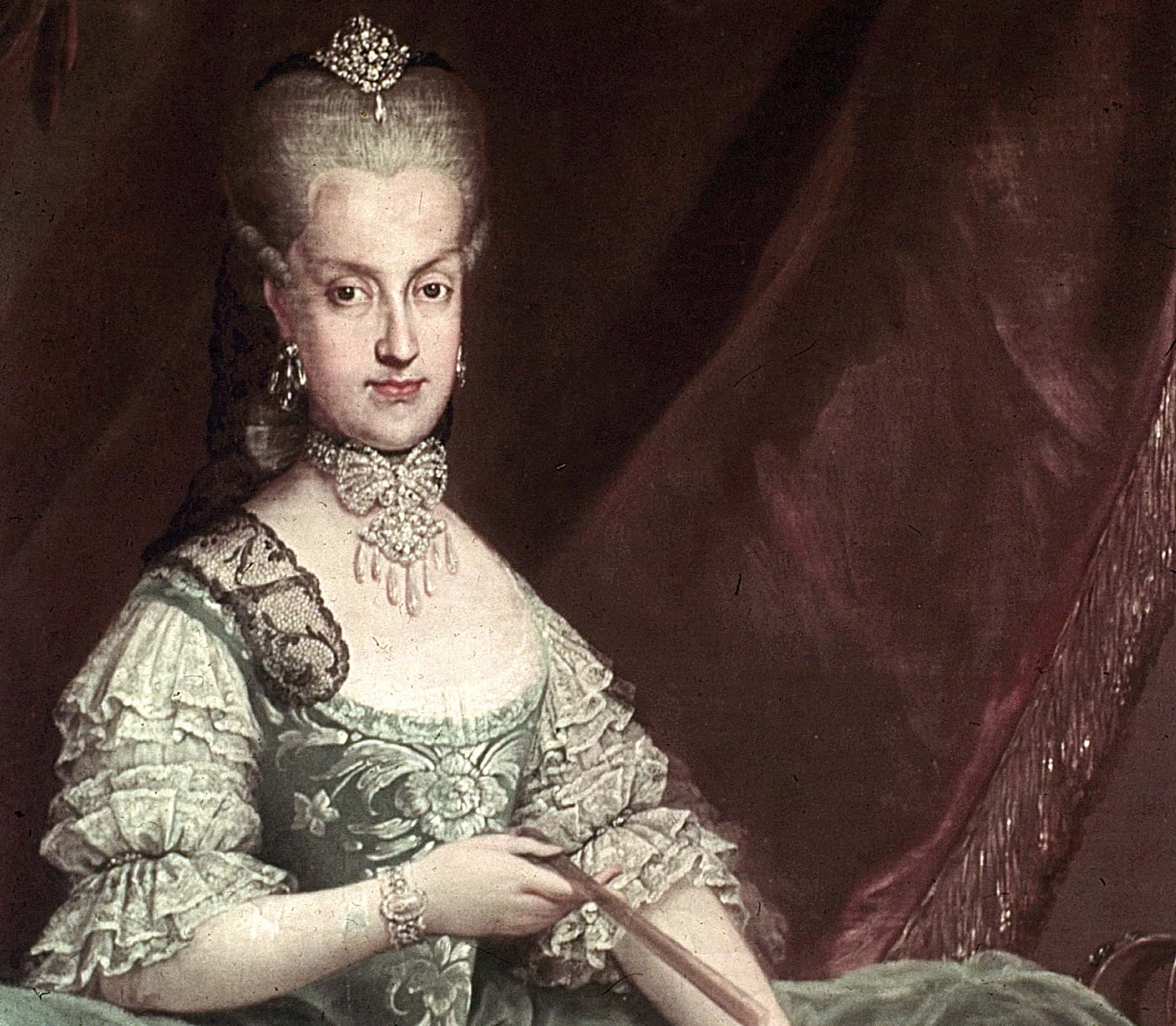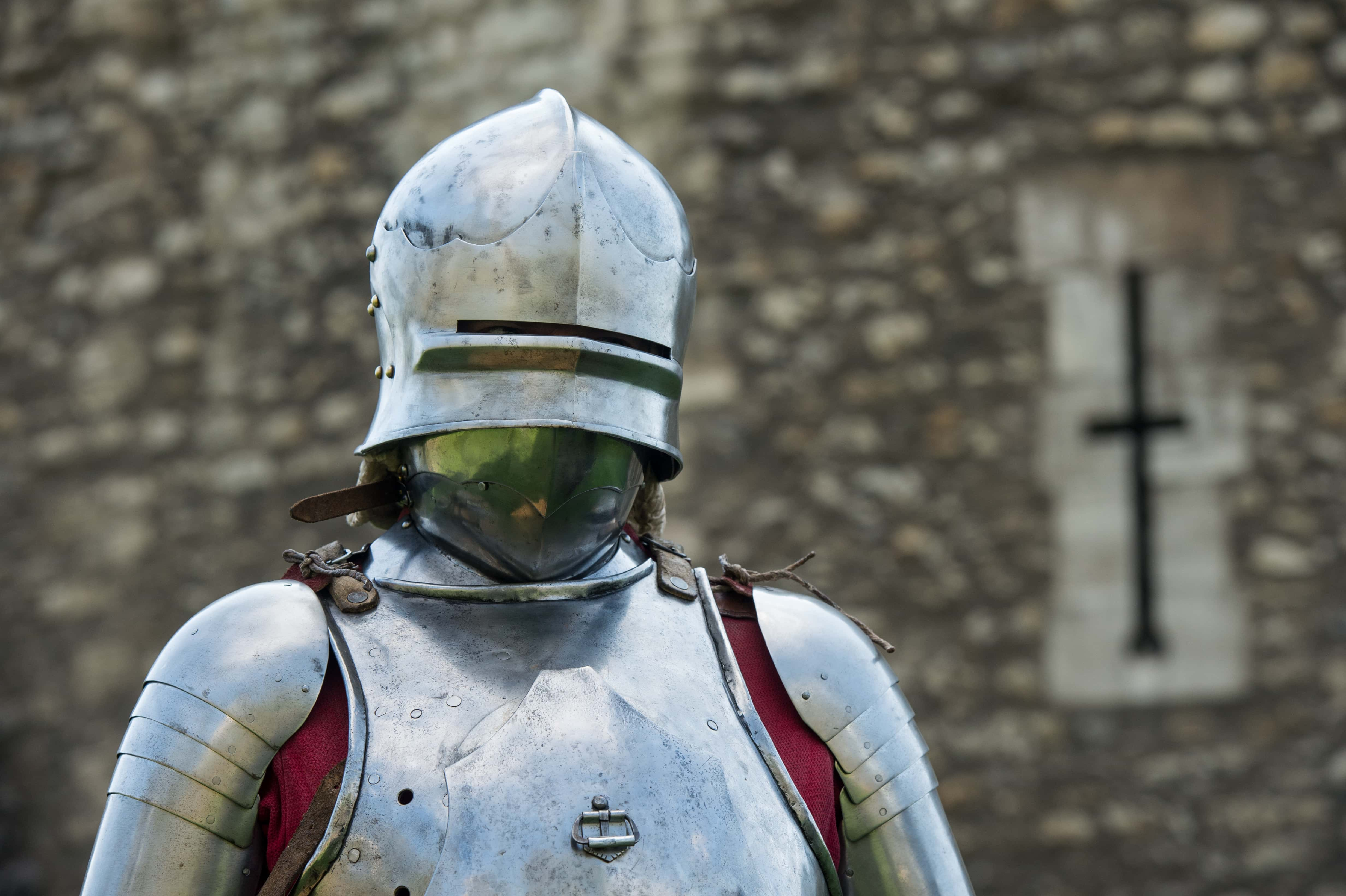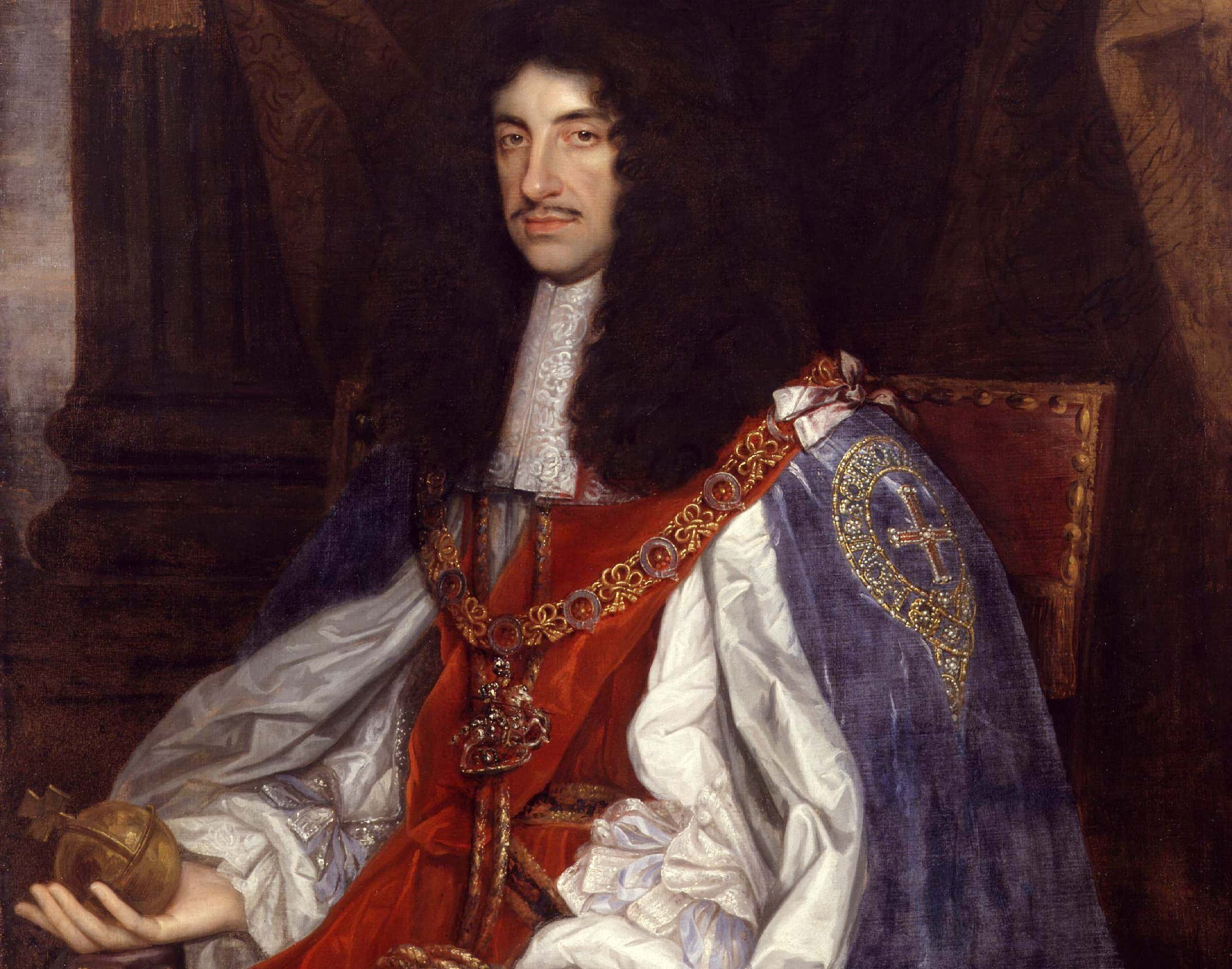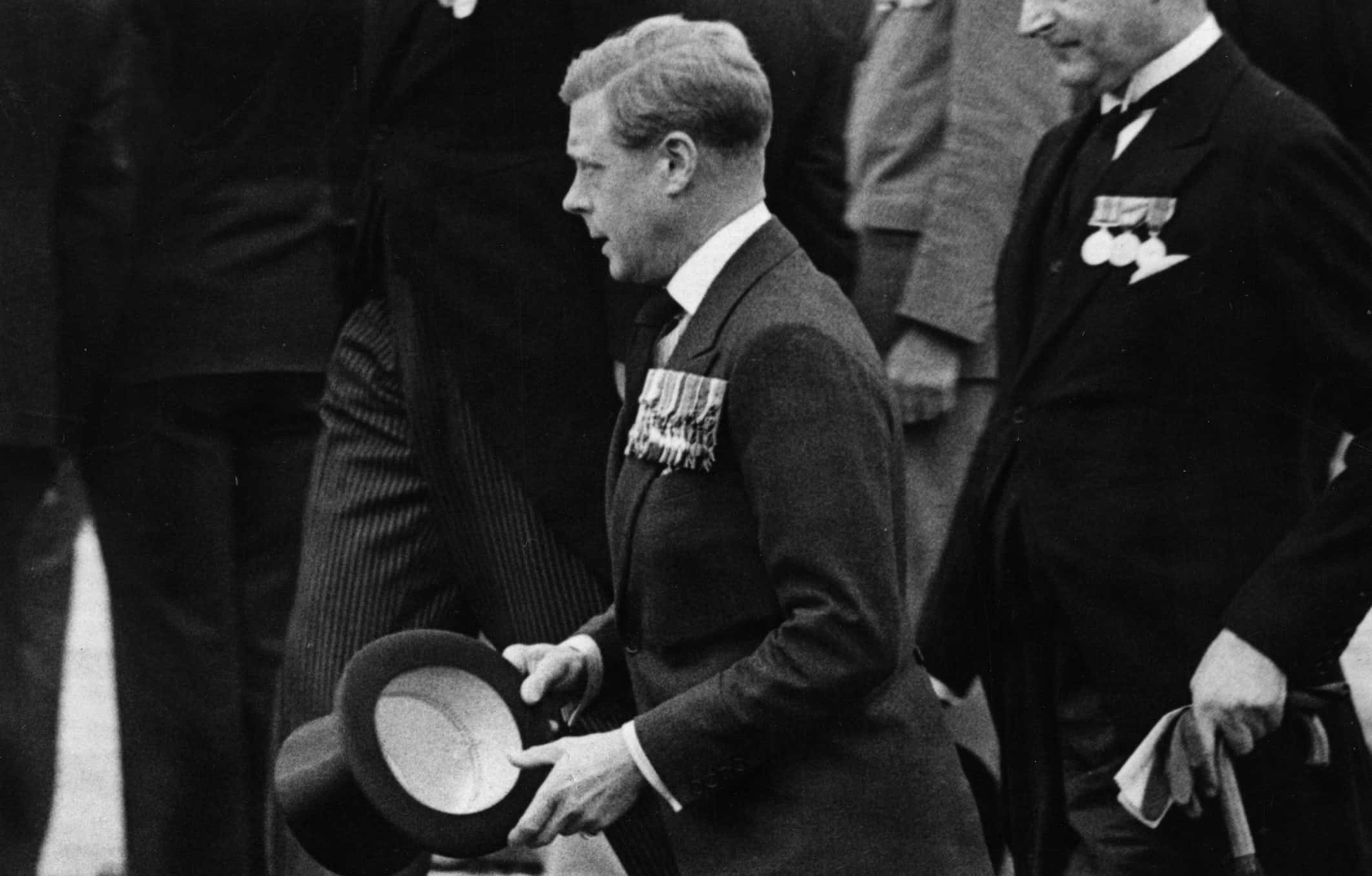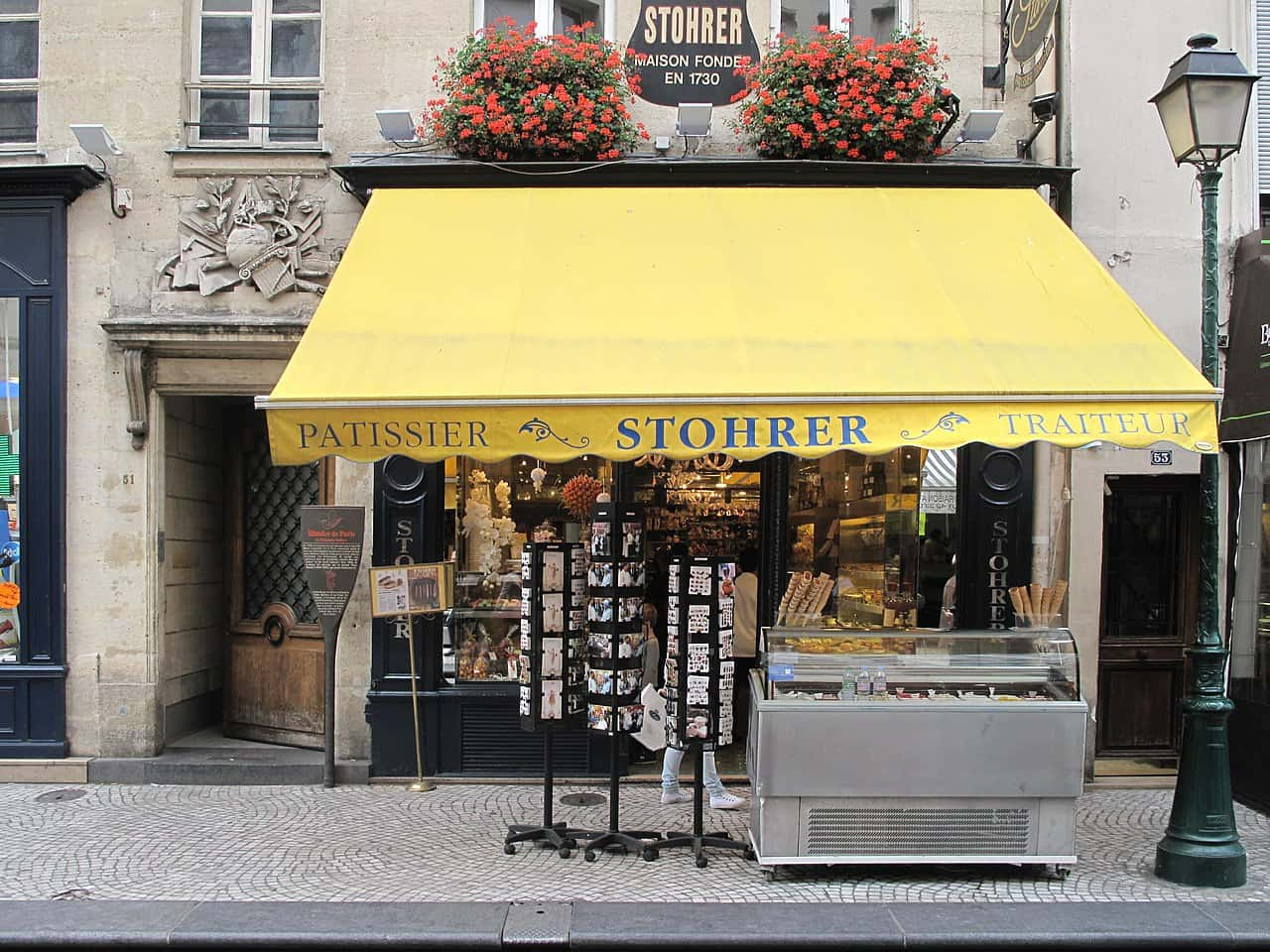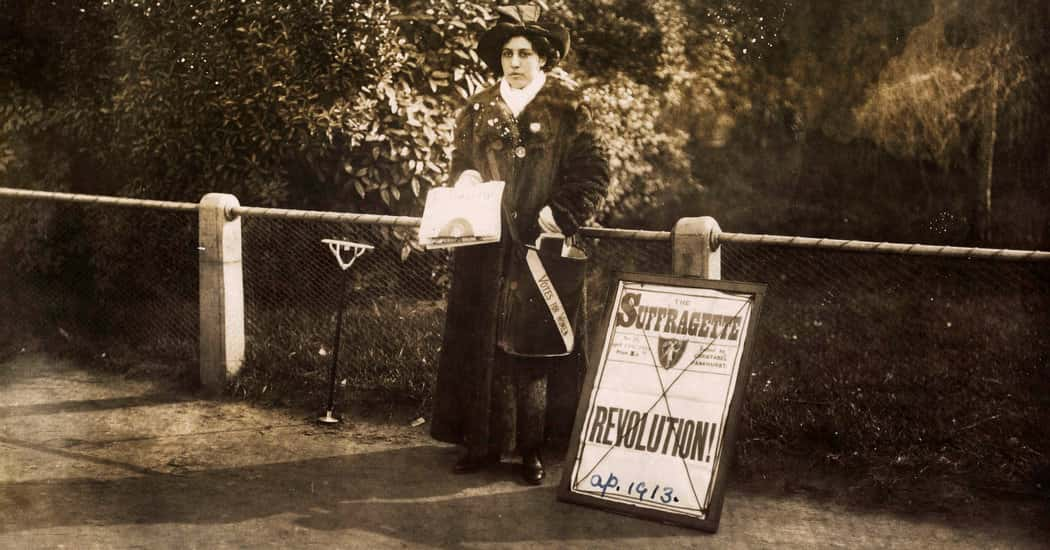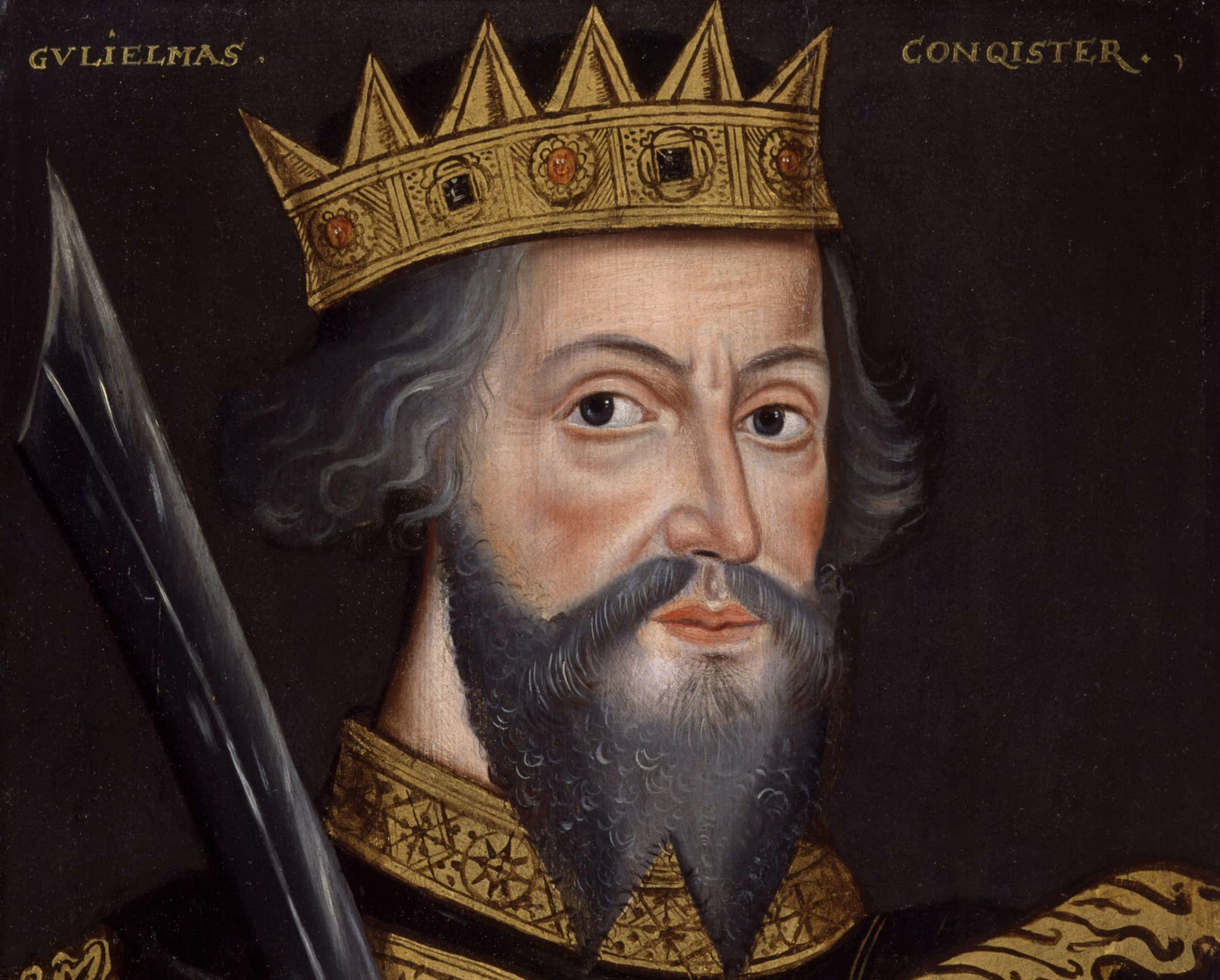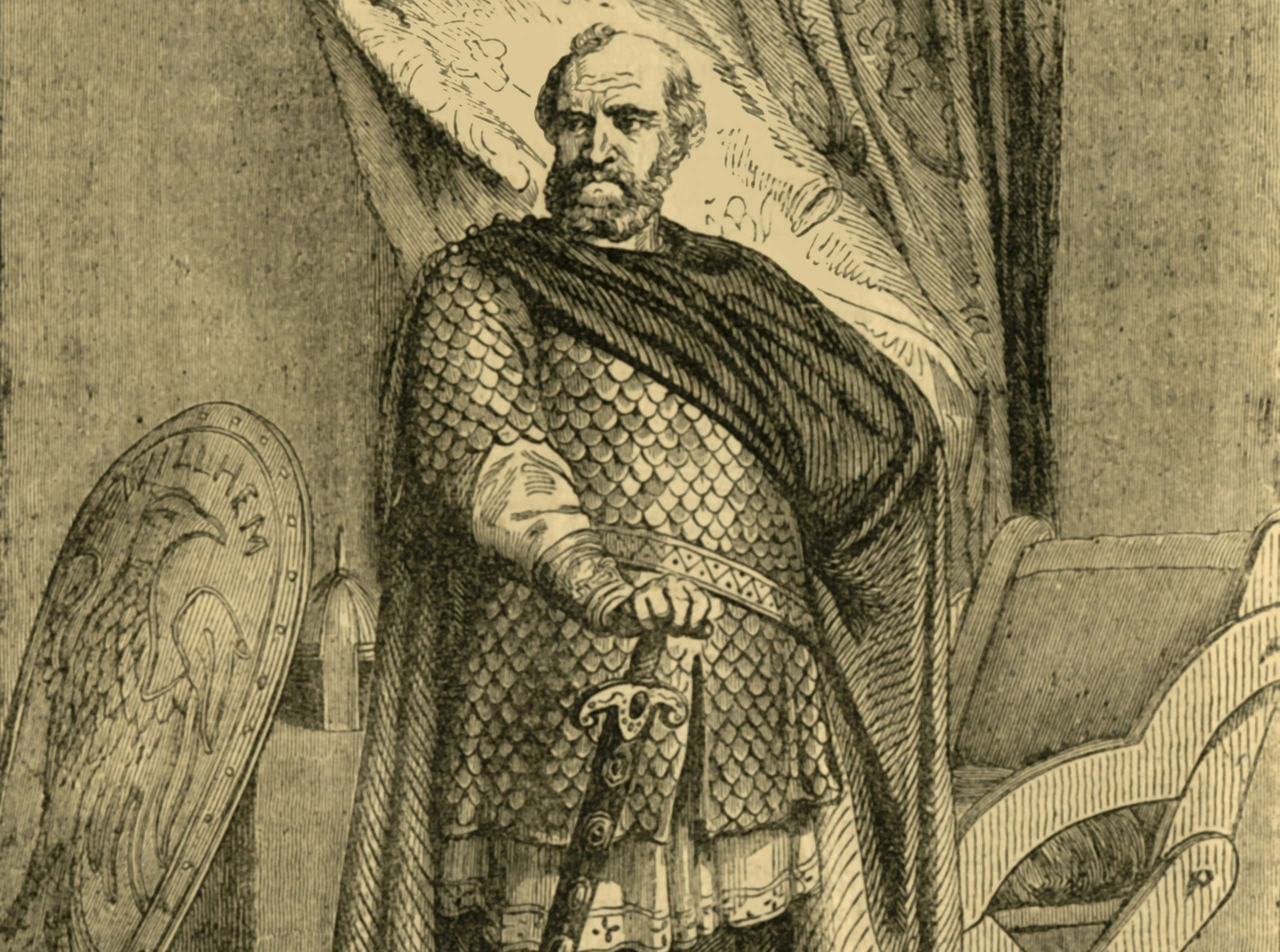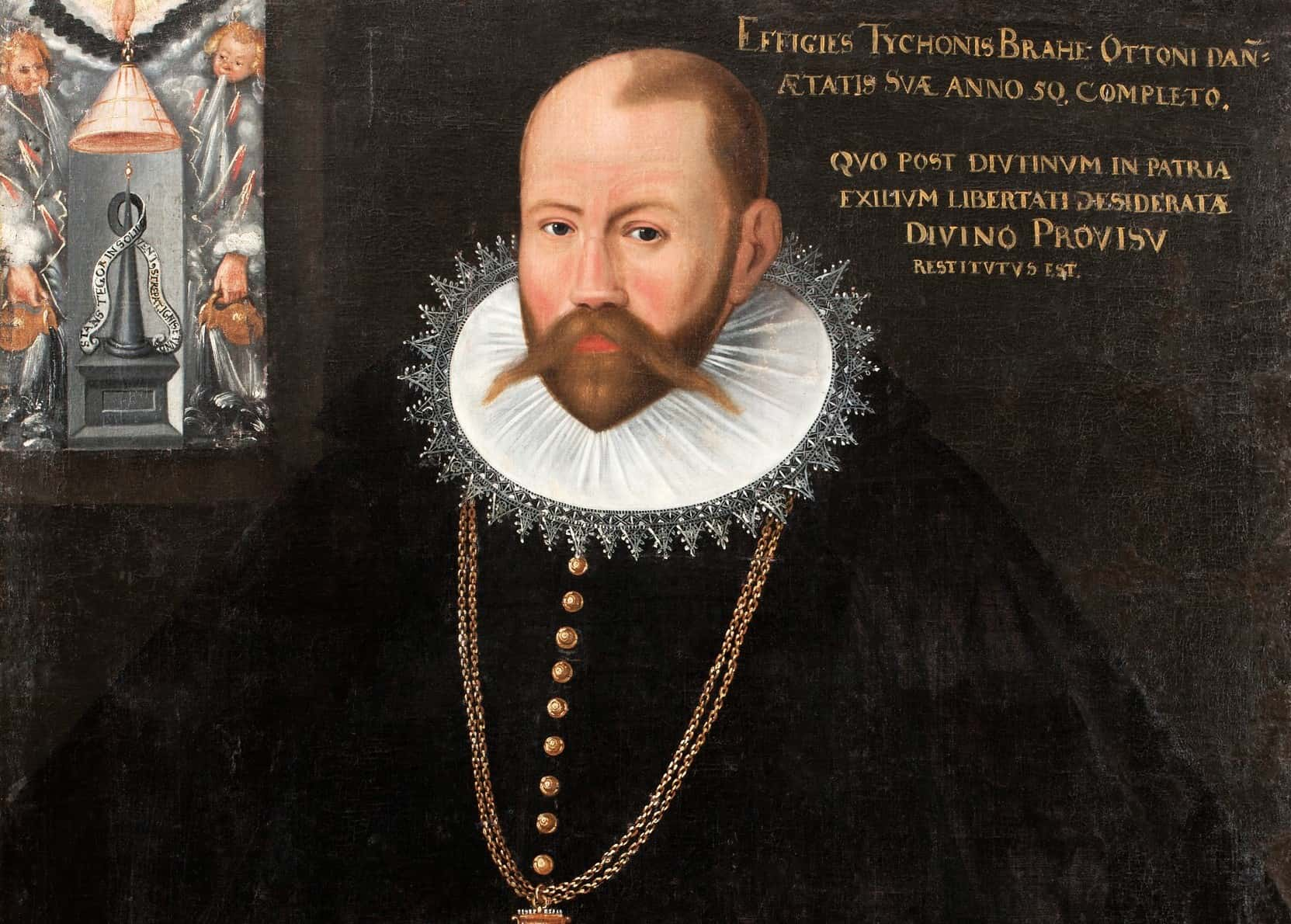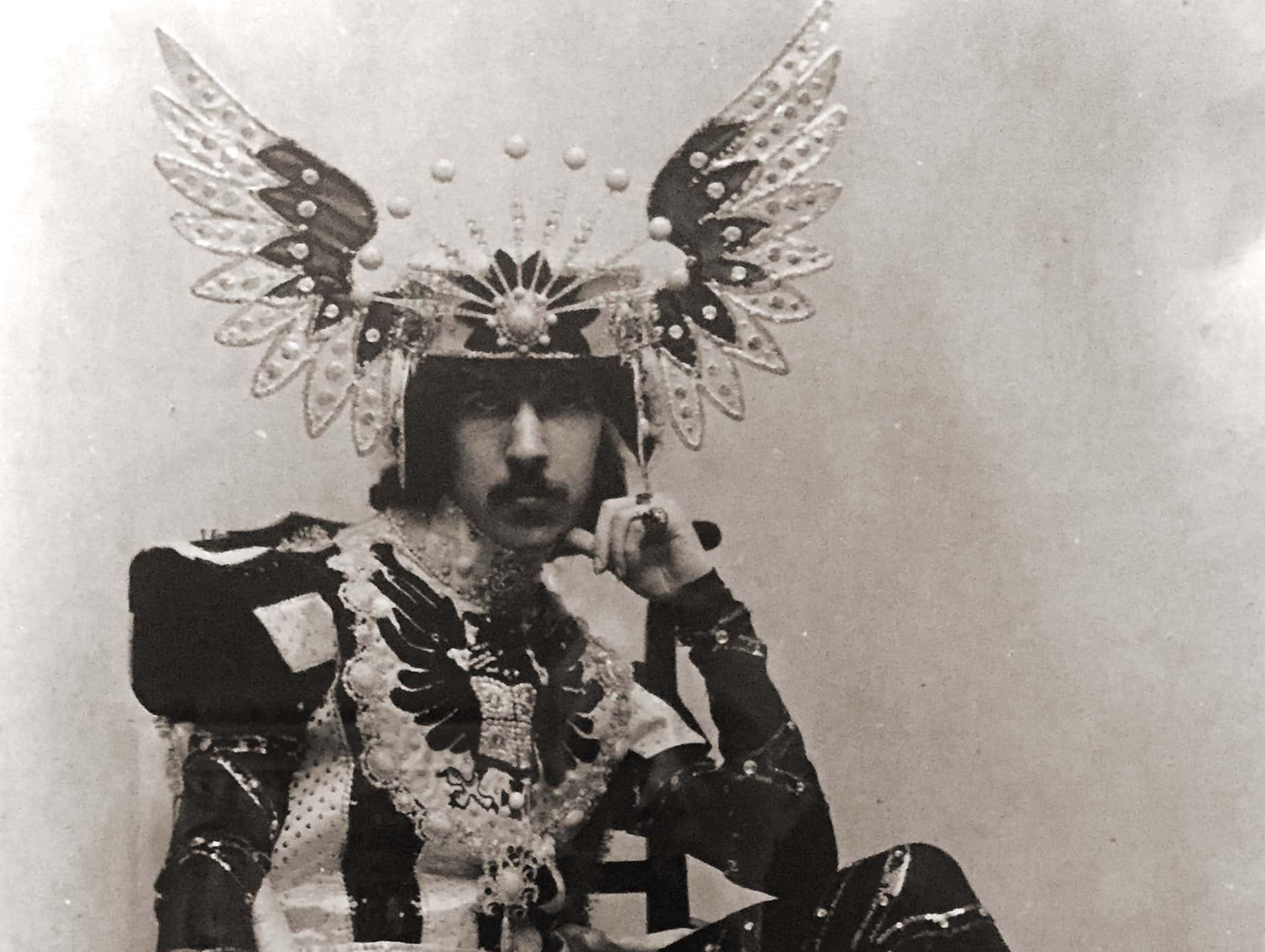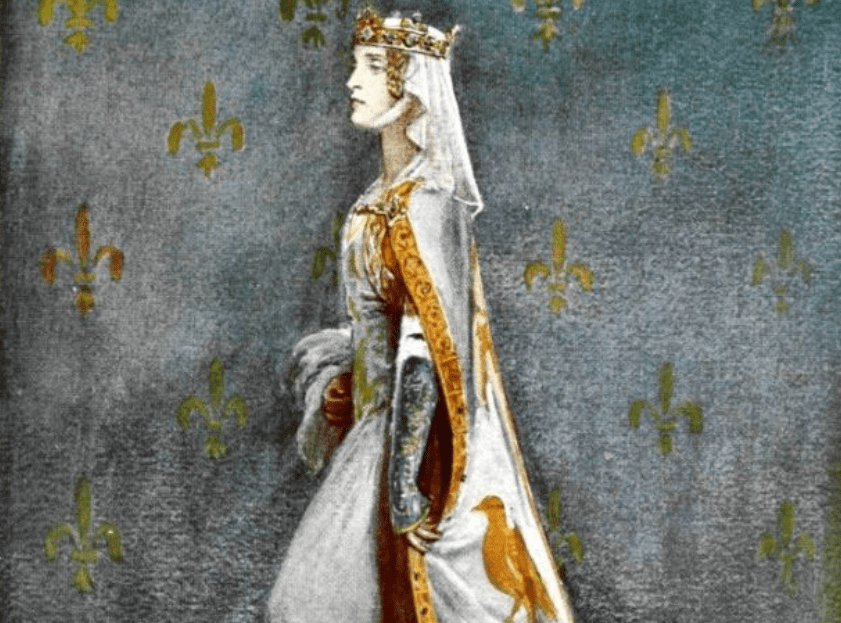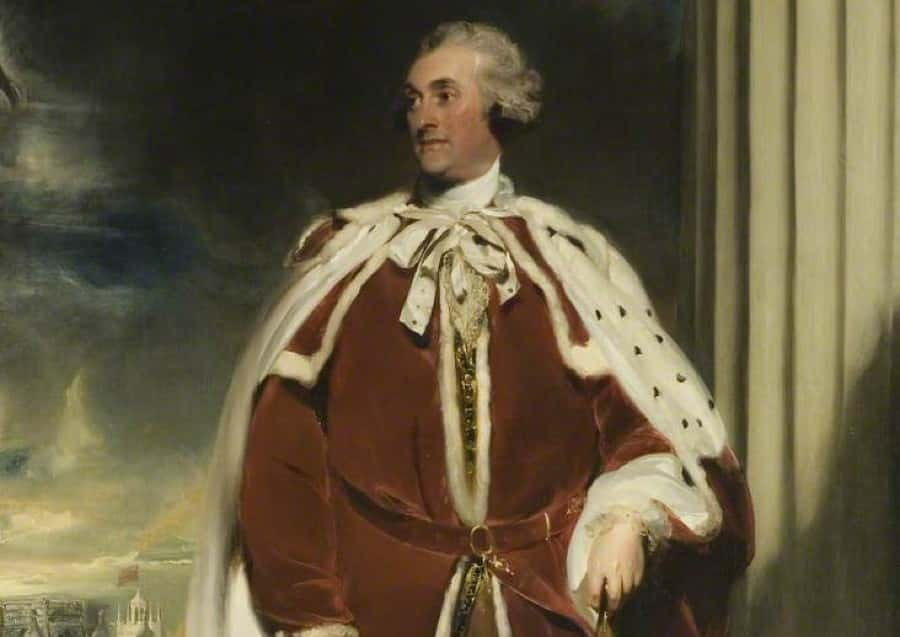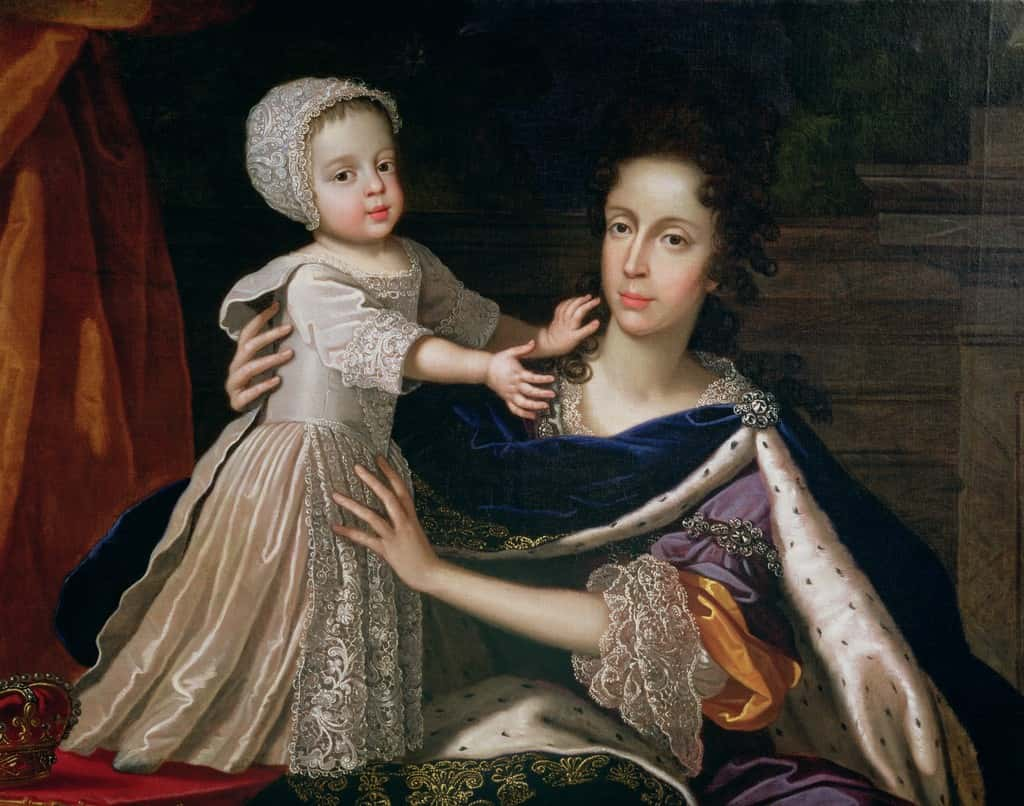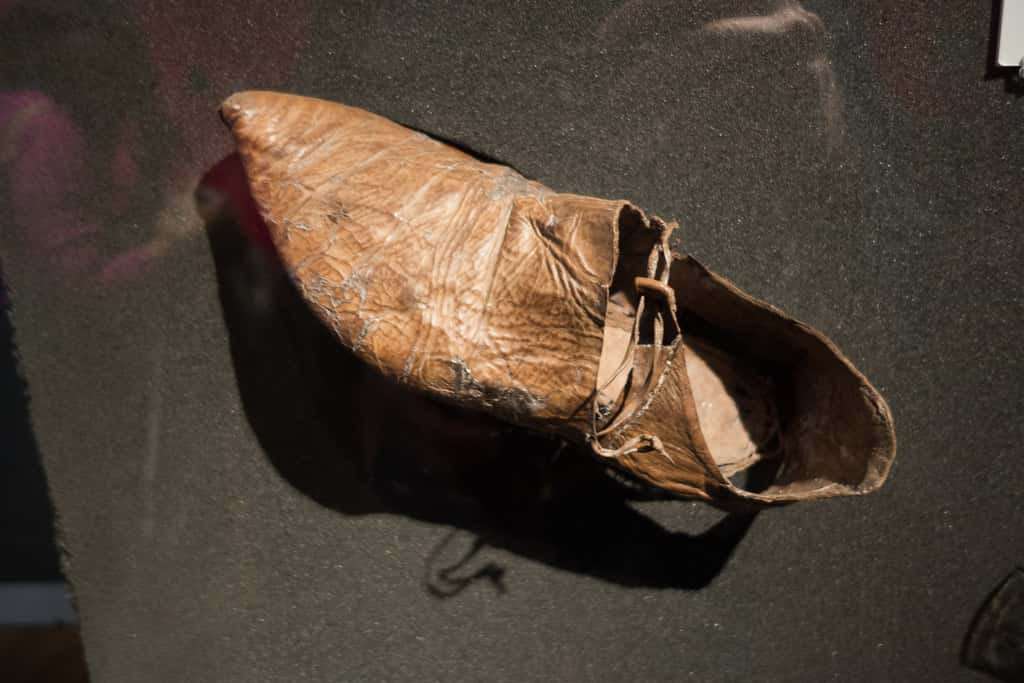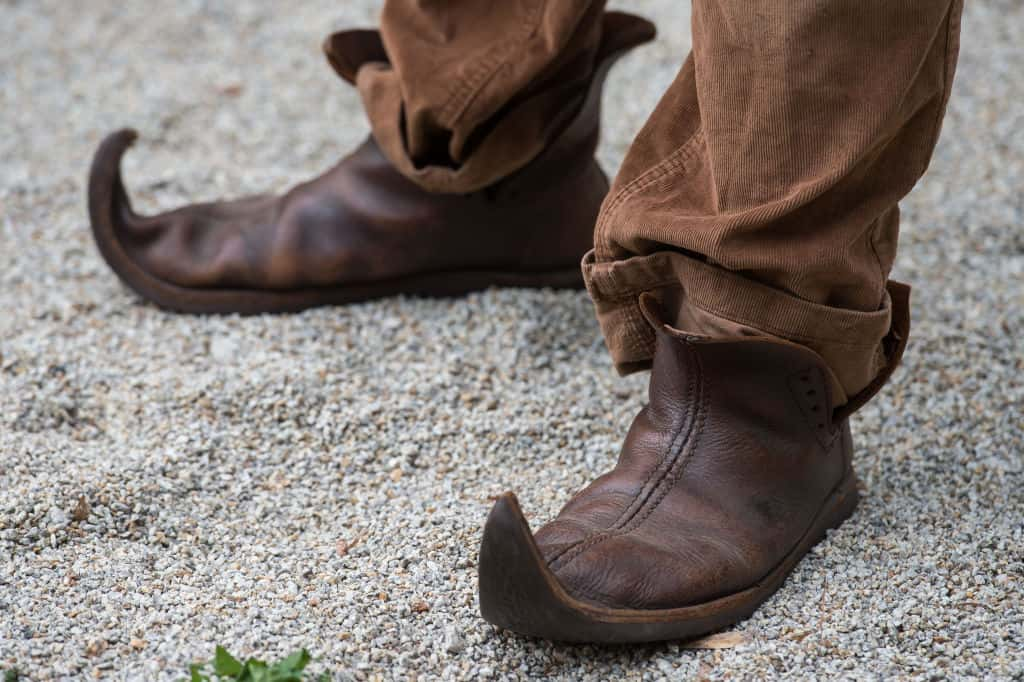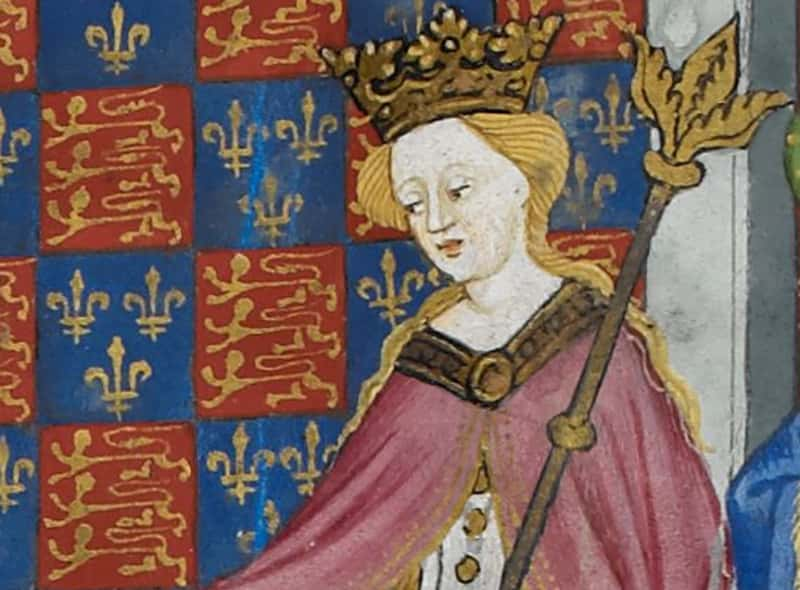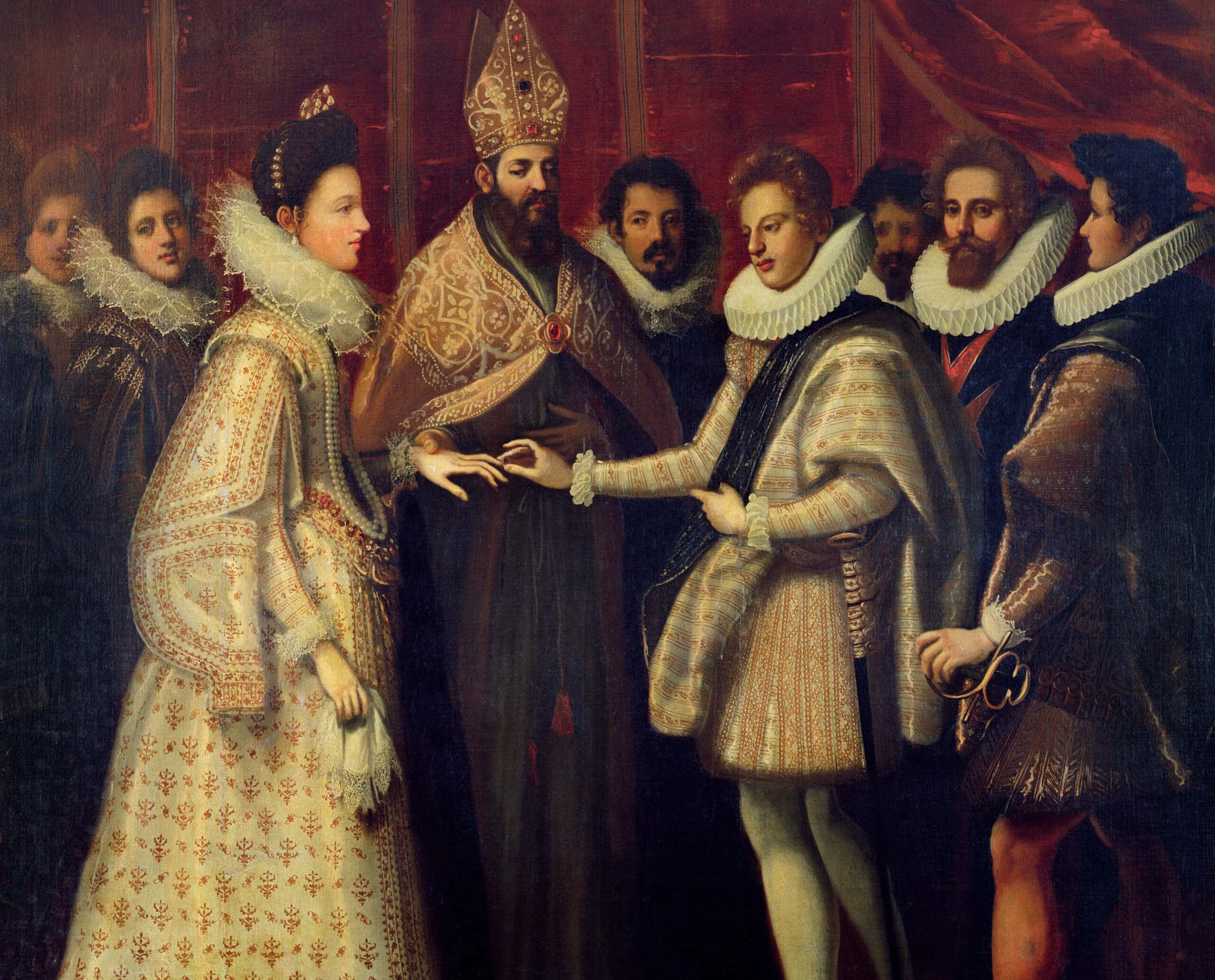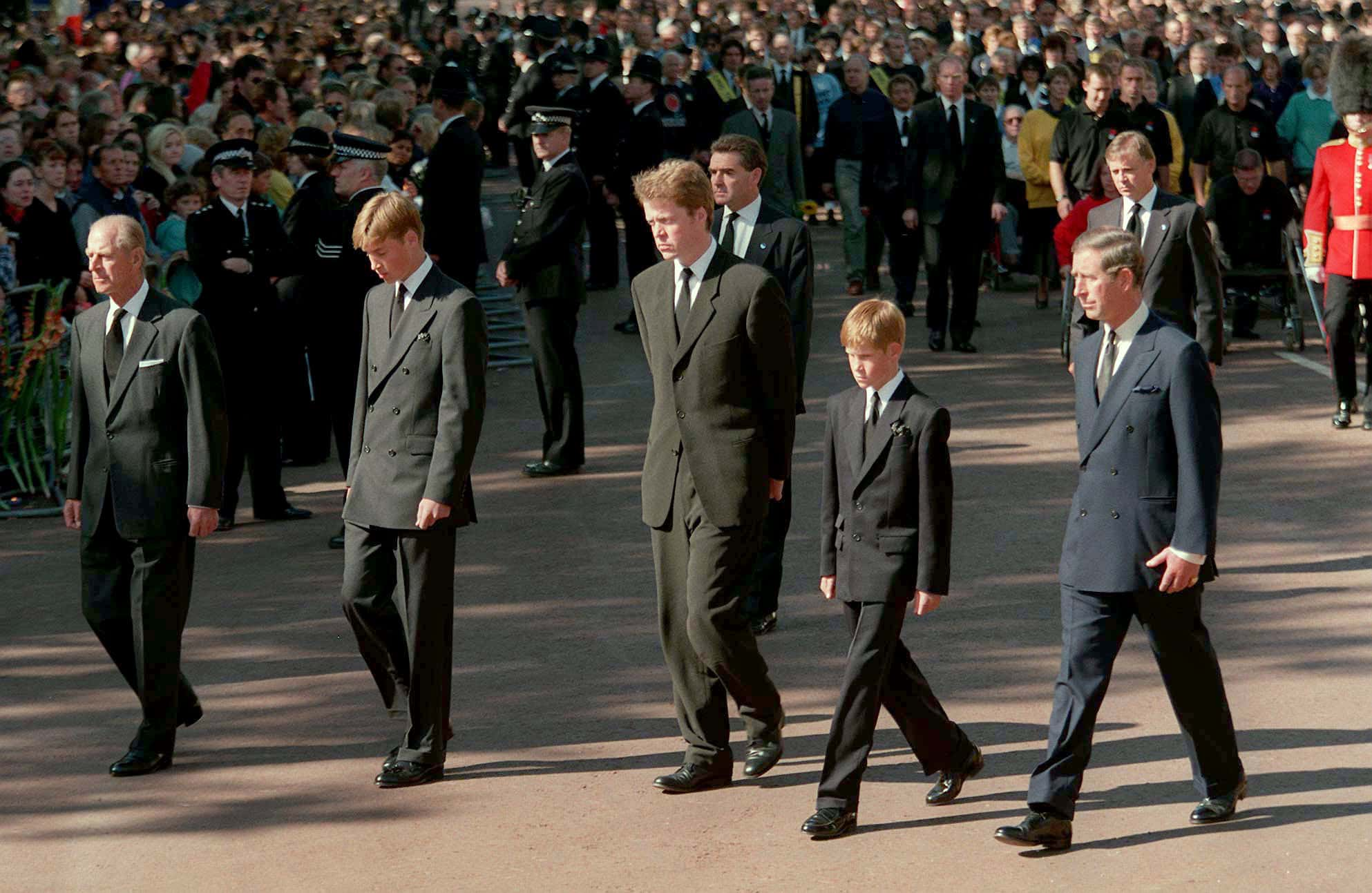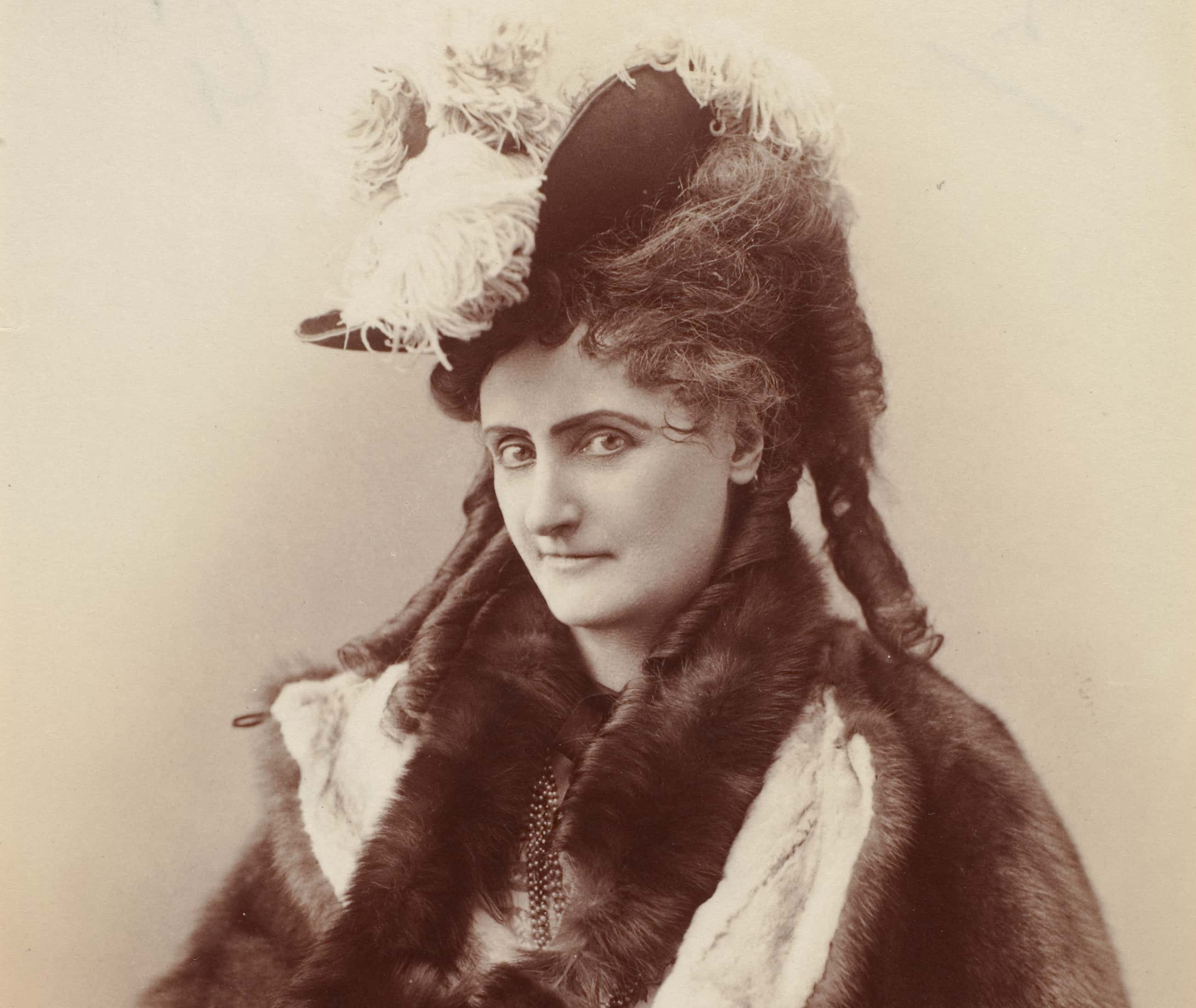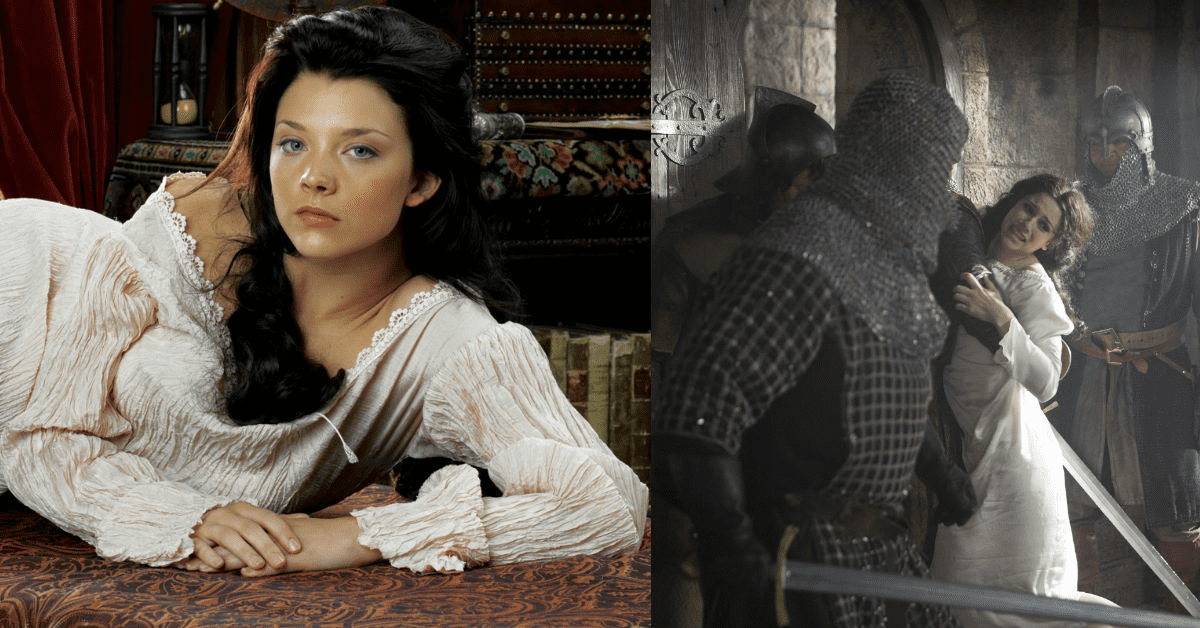2. The Original Side-Chicks
French Kings would honor their favorite mistress with the name “maîtresse-en-titre.” Although this was technically an unofficial (and somewhat scandalous) position, it did come with quite official apartments. These ladies were almost always chosen among the King’s aristocracy, and they often held more influence than even the French Queen herself.
3. On Wednesdays, We Wear Purple (Unless We’re Poor)
One of the freedoms we tend to take for granted is freedom of dress. We don't often think twice about what we're "allowed" to wear, but that wasn't always the case. In much of the early modern age, the aristocracy imposed a set of codes called “sumptuary laws,” which restricted certain clothes to the upper class in some countries.
In other words, if you weren’t an Earl or higher, you had better keep that gold dress at home.
4. Knightime Stories
As the highest order in English chivalry, the Knights of the Garter have been around since the reign of King Edward III in 1348. King Edward was apparently so inspired by the stories of King Arthur, his knights, and the legendary round table that he simply had to have his own version, which still induces members to its elite ranks today.
5. Red, White, and No Blue Bloods
Before you touch that Earldom, think twice. If an old amendment gets ratified, the United States could strip you of American citizenship for accepting a title of nobility from any king, emperor, or foreign power!
6. In Her Own Right
Before she lost her head, Queen Anne Boleyn was one of the first women to hold a noble title as her own property. Her future husband, King Henry VIII, granted her honor as the Marquess of Pembroke in 1532.
7. Does the Crown Take Plastic?
If you’re willing to shed a few pounds, an English title could be yours! As of writing, a non-seated title goes for as little as £195. Good evening, Lord Bobby and Lady Katniss.
8. Dinner for Pups
Many aristocrats love their animals. Francis Henry Egerton, 8th Earl of Bridgewater, took puppy-love to another level. The lord was famous for his sit-down doggy dinners, where he forced servants to dress up his pups in handmade boots. His canine guests were then expected to eat “with decency and decorum,” as treats were served on silver plates. Yes, Egerton was a lifelong bachelor.
9. The Anglican Circle
If you want to marry into the highest ranks of the aristocracy, we have bad news: a 1701 law bans Roman Catholics from inheriting the English throne.
10. From Rags to Riches
At the height of the Ottoman Empire, many aristocrats were not born into the role, but were actually slaves who rose through the ranks of Turkish high society. In fact, the highest-ranked woman in the empire was called the Valide Sultan, the reigning sultan’s mother, and this woman was almost always of slave concubine origin herself.

History's most fascinating stories and darkest secrets, delivered to your inbox daily.
11. Fowl and Fit for a Queen
Drop that bird! In England, only the reigning monarch can legally eat Mute Swans of the Thames. All other breeds of swan, however, are totally game.
12. Winter Comes for the “Flower Family”
In 1947, Japan’s Constitution banned the use of all noble titles, save for those within the Imperial Family. The now-banned “kazoku” caste meant “flower family," and they were a class that bloomed in the 1800s to replace the old feudal lords and “westernize” the Asian island nation. Though their time in power was relatively brief, it was also mighty.
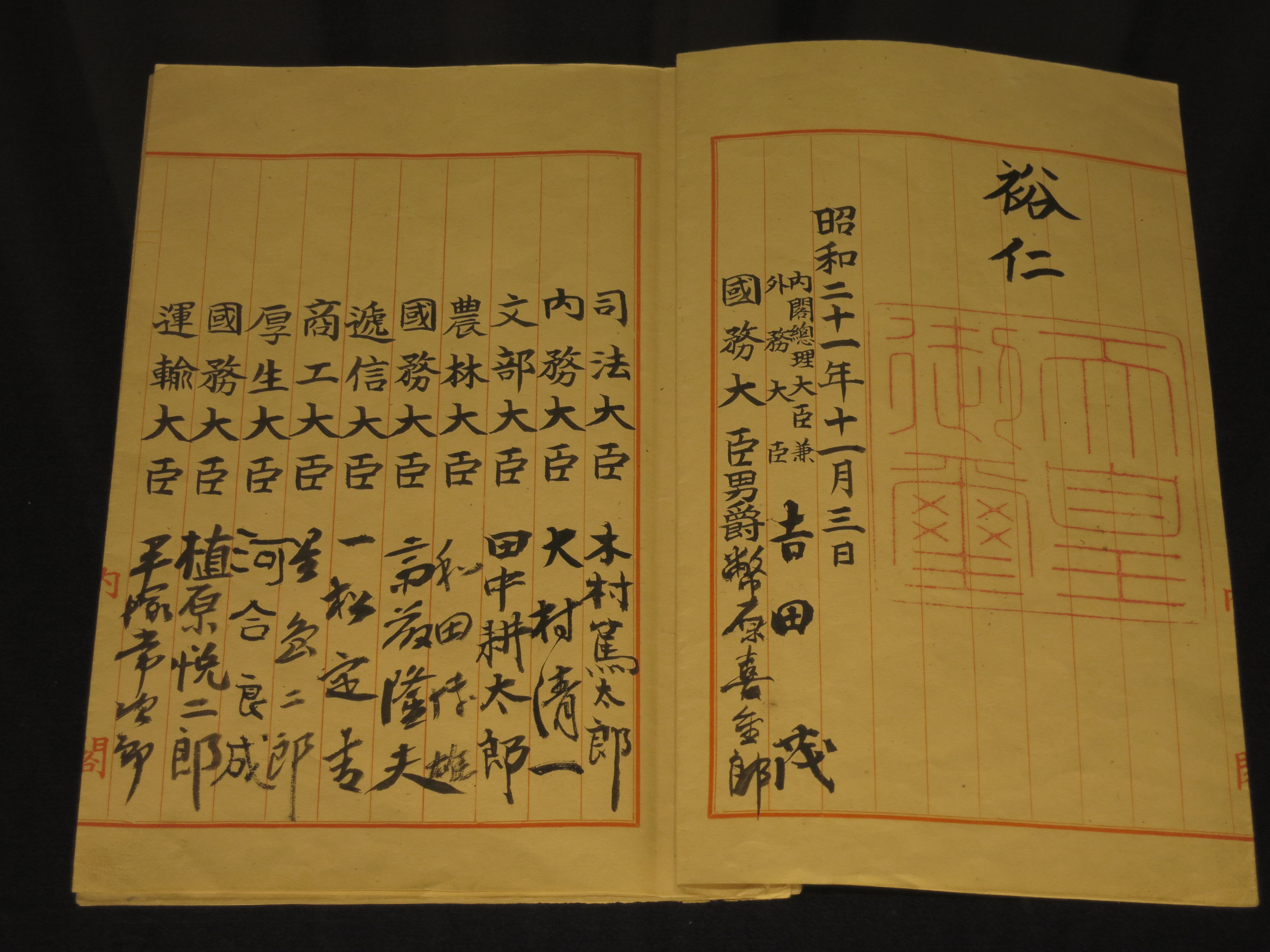 Wikimedia Commons, Ryo FUKAsawa
Wikimedia Commons, Ryo FUKAsawa
13. Outranked, But Not Out-Banked
Queen Elizabeth II is not the richest noble in England. As of 2017, her net worth is “only” £340 million, where nobles like the Duke of Westminster (£9.35 Billion) and Earl Cadogan (£5.7 Billion) outdo her by more than a few pretty pence.
14. Your Amazon Purchase Has…Oh, God No!!!
The debut of socialite Mary Astor Paul was an affair to remember. Not because of the 500-10,000 Brazilian butterflies that were flown in for the big shebang…but because these bugs all died in the ceiling lamps before her big reveal, causing dead butterflies to rain down all over her guests. Welcome to the socialite scene, Mary!
15. The Silver Seeds of Fortune
The Vanderbilt family rose to prominence (and millions) in the American Gilded Age–but they have somewhat humbler origins. Their founder originally came to the “New Netherland” in 1650 as a Dutch farmer/indentured servant. The family has since gone on to produce non-indentured, non-servants such as designer Gloria Vanderbilt and silver-haired CNN anchor Anderson Cooper.
16. Play Hard, Pay Hard
The not-so-jolly King Henry VIII of England rung up a steep grocery bill. Palace purse records show that he spent an average of £6 million on alcohol, and £3.5 million on meat per year in today’s money.
17. When You Hear Hoofbeats, Think of a Zebra
As a child, Lionel Walter Rothschild was obsessed with zoology. As an adult, Lionel’s love for critters transformed into some quirky spending decisions, like his eco-friendly zebra-drawn carriage.
18. Her Majesty Smelt It, Which Means You Dealt It
The diarist John Aubrey records how the Earl of Oxford royally humiliated himself as he bowed and passed gas in front of Queen Elizabeth I, who was never a woman to suffer flatulent fools gladly. In his utter shame, Oxford exiled himself for 7 years. Upon his return, Elizabeth nicely and publicly assured, “My Lord, I had forgot the Fart.”
19. The Blazing Resume of Margaret Cavendish, Duchess of Newcastle
Margaret Lucas Cavendish was a 17th-century English writer and scientific philosopher who began her career as a handmaiden to the exiled royal family during the English Civil War. Supported by her husband’s belief in women’s intellect (and his fat wallet), Lucas had a successful publishing career, which includes not only philosophical works and poems, but one of the earliest English-language science fiction works, The Blazing World. Not bad for an aristocrat.
20. Long Live the Danes
The Danish monarchy is one of the world’s oldest continuing monarchies, with an existence that goes back over 1,000 years.
21. The Little Merman
Robert Hawker married his way to the top. Fed up with being a student, the future famous 18th-century vicar eloped with his wealthy godmother and spent the rest of his days having Disney princess-like adventures. Hawker’s more famous gags include dressing up as mermaid to spook townies (like Ariel, kinda), and excommunicating his cat for eating mice (like Cinderella, kinda).
22. Trophy Husband
The House of Tudor gave us famous (and infamous) rulers like King Henry VIII and Queen Elizabeth I. And it all began when Owen Tudor eloped with the widowed Queen Catherine de Valois of England and propelled himself to royal stepfather of Henry VI. In 1485, Owen’s own seed came to the throne via his grandson, the future Henry VII.
23. Zhou Many Ladies!
Emperors of the Zhou Dynasty in Ancient China weren’t restricted by monogamy. However, the Rites of Zhou rationed Emperors to take only one official empress, three consorts, nine imperial concubines, 27 shifus, and 81 imperial wives.
24. Poison at the French Court
In 1670s France, the authorities busted a ring of alleged poison-makers. This “Affair of the Poisons” was a series of ongoing cases that pointed the finger at many alleged sellers, clients, and conspirators of poison…including lords and ladies at the heart of the French aristocracy. One such lady was Madame de Montespan, the chief mistress of “Sun King” Louis XIV himself.
Although Montespan was not formally charged, her reputation never fully recovered, and the skies eventually set upon the Sun King’s longest love affair.
25. It Was Inbreeding That Killed the Beast
Likely rendered infertile from generations of inbreeding, Charles II of Spain died with no heirs in 1700. Thus, the Hapsburg Dynasty–which reigned over Spain for almost 200 years–came to a cousin-kissing close.
26. Before the Food Network Came to Netflix
For European monarchs, eating was a public affair. We don’t mean banquets or potlucks: the private meals of 18th-century rulers were often actual public performances. In France, specifically for Louis XIV, this was known as the “grand couvert,” where nobles gathered amongst each other to watch their king consume his royal bounty.
27. At Least He’s Consistent…
On a minimum of three separate occasions, the corpulent King Henry VIII chose to cavort with ladies from the noble Howard family. Two of his six queens were daughters of House of Howard (and first cousins to each other): second wife Anne Boleyn and fifth wife Catherine Howard. Both were also executed. Before he married either, Henry also conducted an affair with Anne’s sister, Mary Boleyn.
28. Shut the France up!
Maria Carolina of Austria was the Queen of Naples and Sicily, and the devoted sister of falsely accused cake-eater Marie Antoinette (you might have heard of her). In 1793, upon learning of her sister’s death by the hands of French revolutionaries, Maria Carolina expelled the very “monstrous” French language itself from her vocabulary.
29. We'll Have Nun of That!
We’d all like to think that medieval knights were chivalrous and all that, but the truth is that most of them really weren’t. Case in point: Sir John Arundel, who, in 1379, convinced nuns at a convent to let him stay for a few nights. Wanting to see the best in him, the nuns agreed. But Arundel and his men took advantage of the situation, looting the nunnery and kidnapping several nuns.
The men then stormed a nearby church and kidnapped a newly-married bride before finally heading back out to sea and throwing their hostages overboard.
30. Behind Every Great Man Is a Doggo With a Similar Hair-Do
Along with his rock-star tresses and raunchy affairs, King Charles II of England was famous for inspiring his own breed of dog. Charles was hugely fond of his toy spaniel, and he would even cavort with the canine at royal council meetings. As a result, these dogs have since been known as "King Charles Spaniels” in honor of their No. 1 fan.
31. Who Else Saw The King’s Speech?
In 1936, Edward VIII of England abdicated his throne for an American socialite. That Edward’s lover, Wallis Simpson, was a foreign commoner was not too big a deal. What was a big deal: Wallis was a two-time divorcée…who was technically not yet fully divorced from her second husband. As the head of the English Church, Edward could not marry a divorcée whose husband(s) were alive.
Thus, Edward chose his heart over his crown, leaving the throne to his brother.
32. Times Change, But European Backpackers Are Forever
For an upper-crust English boy in his 20s, the Grand Tour was an important rite of passage. Upon graduating Oxford or Cambridge, a lad would travel from France to Switzerland, Italy, Turin, Florence, Venice, Rome, and (if he had time) Naples. Hopefully, this only took a few months…but if your name was James Caufield, Earl of Charlemont, you might lose yourself for nine years!
33. All for Love
In 1889, the 17-year-old Baroness Marie Alexandrine von Vetsera was found shot to death alongside her lover, the married Prince Rudolph of Austria, at their Mayerling country lodge. It was an apparent murder-suicide, but to this day, the chain of events leading up to their deaths remains ambiguous. Although some assumed the prince murdered his lover, recently discovered letters from the Baroness to her mother indicate that she was planning to commit suicide alongside the prince "out of love."
 Wikimedia Commons
Wikimedia Commons
34. Boozy Baked Goods
The iconic pastries of Nicolas Strohrer were essentially Polish bundt cakes soaked in fortified wine. Of course, these juiced sweets were all the rage with French courtiers and their high-class palates.
35. Princess, Suffragette, and Tax Evader
Sophia Duleep Singh might have been a Punjabi princess, but the exile was raised in England as Queen Victoria’s ward. Victoria encouraged her Indian goddaughter to be a proper socialite; ironically, Singh became one of the most notorious suffragettes in English history. Inspired by travels to her homeland in India, Singh came back to England in 1909 and auctioned many of her belongings to fund women’s suffrage.
Singh's refusal to pay taxes and her wily ways once made her god-brother King George V groan, “Have we no hold on her?” Answer: Nope.
36. Enter the New Nobility
England will welcome its first black marchioness. In 2013, the Nigerian-English model Emma McQuiston married Ceawlin Thynn, who is heir to the Marquisate of Bath. Although McQuiston’s father-in-law allegedly snubbed her, she is still Viscountess Weymouth (by her marriage) and is set to have Bath upon her hubby’s daddy’s death.
37. Harry & Goliath
As a toddler, Prince Harry of England was the younger and more docile of his siblings. His older brother, Prince William, was accordingly nicknamed “Bill the Basher” for his precociously noble dominance.
38. There’s a New Ruler in Town
William the Conqueror took over England after his victory at the Battle of Hastings in 1066. He was the first Norman King of England, and commissioned the Domesday Book in 1086 to compile a census of his new lands and people. The Normans brought a lot of change to England, including establishing Oxford University and building the Tower of London.
39. Fad Dieter
William gained so much weight later in life that the French king described him as a pregnant woman about to give birth. In an effort to slim down, William tried his own version of a fad diet, drinking only wine and spirits for a time and refusing any solid food. Alas, it didn’t work.
40. Sir Nose-It-All
Tycho Brae was a Danish nobleman, writer, astronomer, and one nose short of a full face thanks to a college duel. While attending the University of Rostock in 1566, Brae entered a series of quarrels with his cousin, Manderup Parsberg. The two eventually decided that the only way to squash their gentlemen’s beef was with a duel.
Unfortunately, Brae lost his nose in the altercation, and had to wear a prosthetic on his face for the rest of his life.
41. The One-Man $how
Henry Cyril Paget, 5th Marquess of Anglesey, was a 19th-century English lord who had an annual income of a whopping £11 million in today's money. Nonetheless, he still died in massive debt. Among his most expensive vices: the dramatic arts. Paget notoriously converted his family chapel into a 150-seat private playhouse called “The Gaiety Theatre.”
There, Paget staged and headlined opulent productions before his star flamed out. He died, practically penniless, at the age of 29.
42. Hold Onto Your Horses (and Your Hymens)
Sidesaddle had a noble purpose: to protect highborn virginity. Anne of Bohemia, future Queen of England, rode this chair-like, supposedly hymen-preserving contraption into her 1382 marriage to Richard II.
43. His "Leave Me Alone" Holes
So, you think you’re an introvert? Meet William Cavendish, the Duke of Portland, an 1800s English aristocrat and a man so reclusive that he paid for a series of underground tunnels to minimize his contact with the outside world. This lordly project still lies today under Welbeck Abbey near Clumber Park in Nottinghamshire.
44. Royal Baby, Sunnyside up
When Mary of Modena, queen consort of England, gave birth to a long-awaited heir in 1688, rumours of a conspiracy began to rampage the nation: this was no true prince–but a changeling, smuggled into the palace via warming pan. While this story was almost definitely false, it was taken so seriously for its time that the Privy Council had to conduct a formal investigation about this alleged plot to crown a Warming Pan Prince (#PanGate1688 #IBelieve).
45. What’s Your Size?
Despite what were often hard times, fashion was still a priority for the nobility of the Middle Ages. In the 1300s, the latest fashion craze among wealthy English men was...long shoes? As in, Peter Pan-style, pointy-toed footwear. Seems silly, but it still beats frosted tips.
46. There’s Gotta Be a Stuffing Joke in Here Somewhere
More than 100 years after long-toed shoes became popular, their length had grown so extreme that men had to stuff the toes of their shoes with wool, moss, or even whalebone. Some nobles had to tie the tips of their shoes to their leggings so they could walk properly. Even crusaders wore the fashionable footwear, but if they needed to make a quick escape, they would chop off the ends of their shoes so they could run better.
47. They’re Too Sexy for Their Pants
This odd choice of footwear wasn’t the only thing different about how noble men used to dress. The younger male nobles fancied their bodies, and wanted everyone else to take notice. You’d often spot these nobles wearing a codpiece, a pouch that emphasized the groin area. Sometimes, these young men even wore a corset to give them a slimmer figure.
48. Pobody’s Nerfect
In 1793, French revolutionaries falsely perceived the statues that lined the Notre Dame Cathedral as monuments to the kings of France (they were actually kings of Judea and Israel). Off went 28 limestone heads! But no, really: the crowd pulled the statues down and chopped the stone heads off by guillotine in Cathedral Square.
49. Pompadour and Circumstance
Famed courtier Madame de Pompadour proved to be deeply influential and beloved in her own time. She not only shared the bed of King Louis XV but also shared his power, to the benefit of many of the aristocrats in their royal circle. In fact, many consider Madame de Pompadour to be one of the most powerful mistresses in history.
50. From Lover to Friend
While on the outside, their relationship was happy and healthy, modern historians now know that Madame de Pompadour and King Louis hid a dark secret behind bedroom doors. From 1750 onwards, Pompadour ceased being a sexual partner to Louis XV. That is, they no longer actually made love, in part due to her very poor health.
Over the years as Louis XV’s mistress, she suffered three miscarriages, and also “suffered the after-effects of whooping cough, recurring colds and bronchitis, spitting blood…as well as an unconfirmed case of leucorrhoea.” However, her bond to Louis did not dim, and she served as a “friend of the King,” maintaining her influence at court.
51. Baby's First Judicial Murder
Margaret of Anjou was a Queen of England and the House of Lancaster’s chief strategist throughout the Wars of the Roses. Ever the proactive mother, Margaret once allowed her seven-year-old son to decide exactly how to execute his captured enemy cousins. The prince chose the classic “take their heads off,” which proves kids can be sensible when they’re raised with trust and structure.
52. Paternal & Papal Invasions of Privacy
On October 2, 1533, the Pope Clement VII married Catherine de Medici off to the French crown prince, Henri. The couple were lucky to be the same age—just 14 years old—but old men still wormed their way into the honeymoon. Henri’s father, King Francis I, apparently stayed in the bedroom until the marriage was fully consummated, and the Pope visited the couple in bed the next morning to bless the previous night’s “proceedings.” Yick.
53. Thanks, Diane
Henri and Catherine didn't have a fairy tale ending. Henri became utterly enthralled by his mistress, Diane de Poitiers. In fact, it was Poitiers who had to remind Henri of his royal baby-making “duties” with Catherine, and bid him to spend more (re)productive time with his wife. You know you're doing something wrong when your mistress starts telling you to sleep with your wife.
54. Grandfatherly Advice
Amidst the royal family’s polarizing response to Princess Diana’s tragic death in 1997, it was Queen Elizabeth's husband Prince Philip who convinced his grandsons to walk behind their mother's coffin. When Princes William and Harry were apprehensive, Philip reportedly told his eldest grandson, "If you don't walk, I think you'll regret it later. If I walk, will you walk with me?"
At the funeral, Philip, William, Harry, Charles, and Diana’s brother followed the bier.
55. Let's Take a Selfie
Virginia Oldoini—known better to history as the Countess of Castiglione—might be the original Queen of the Selfie. The Italian aristocrat’s legendary beauty and photographic adventures led to her reputation as history’s first modern fashion model. Of course, she didn’t get by on looks alone, though they certainly helped her from time to time.
56. Putting the “Snap” in Snapchat
The Countess of Castiglione's fashion shoots also doubled as warning shots to her enemies. When her estranged husband tried to claim custody of their son, she sent him a photo of herself with loose hair…and a knife in her hand. Naturally, the photo was titled “La Vengeance.” Do you think her husband eventually got the point?
Sources: 1, 2, 3, 4, 5, 6, 7, 8, 9, 10, 11, 12, 13, 14, 15, 16, 17, 18, 19, 20, 21, 22, 23, 24, 25, 26, 27, 28, 29, 30, 31, 32, 33, 34, 35, 36, 37, 38, 39, Reddit, 41, 42, 43, 44, 45, 46, 47, 48, 49, 50, 51, 52, 53, 54

